Sequel, 65oo sq. ft living sculpture, Summer Solstice 2024, Image by Jake Eshelman
image by Wolf Mac Lean
image by Jake Eshelman
Your Custom Text Here

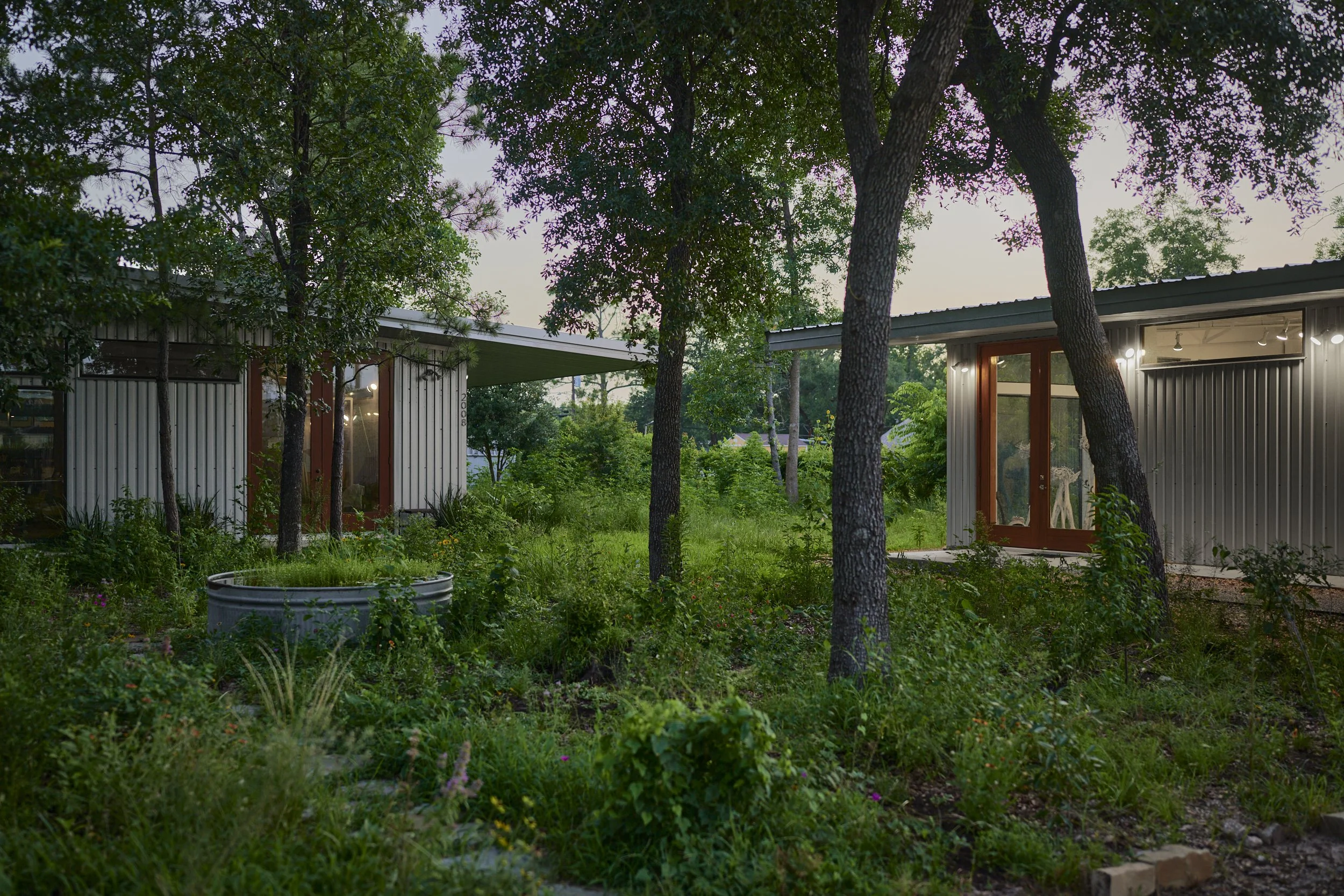
Sequel, 65oo sq. ft living sculpture, Summer Solstice 2024, Image by Jake Eshelman
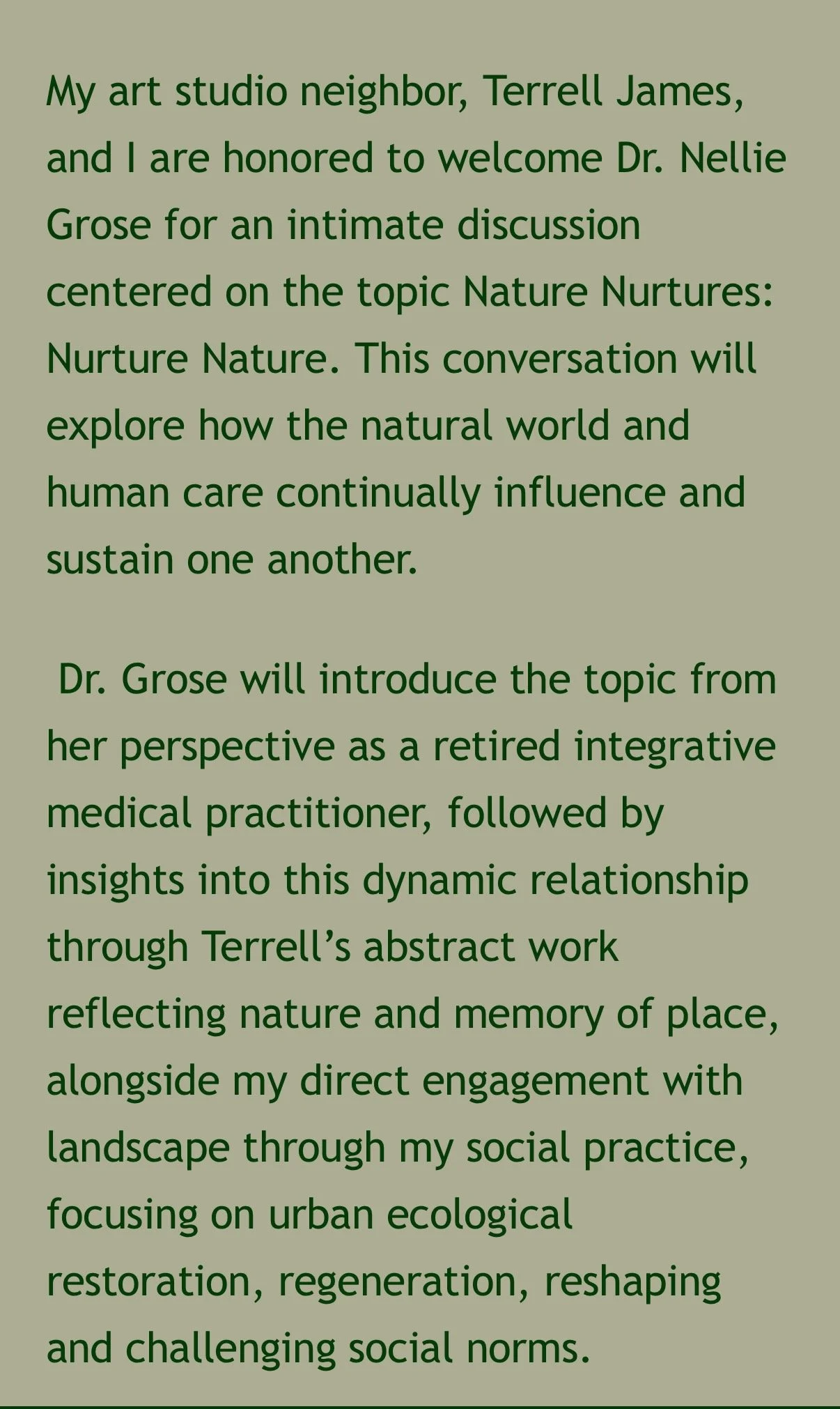
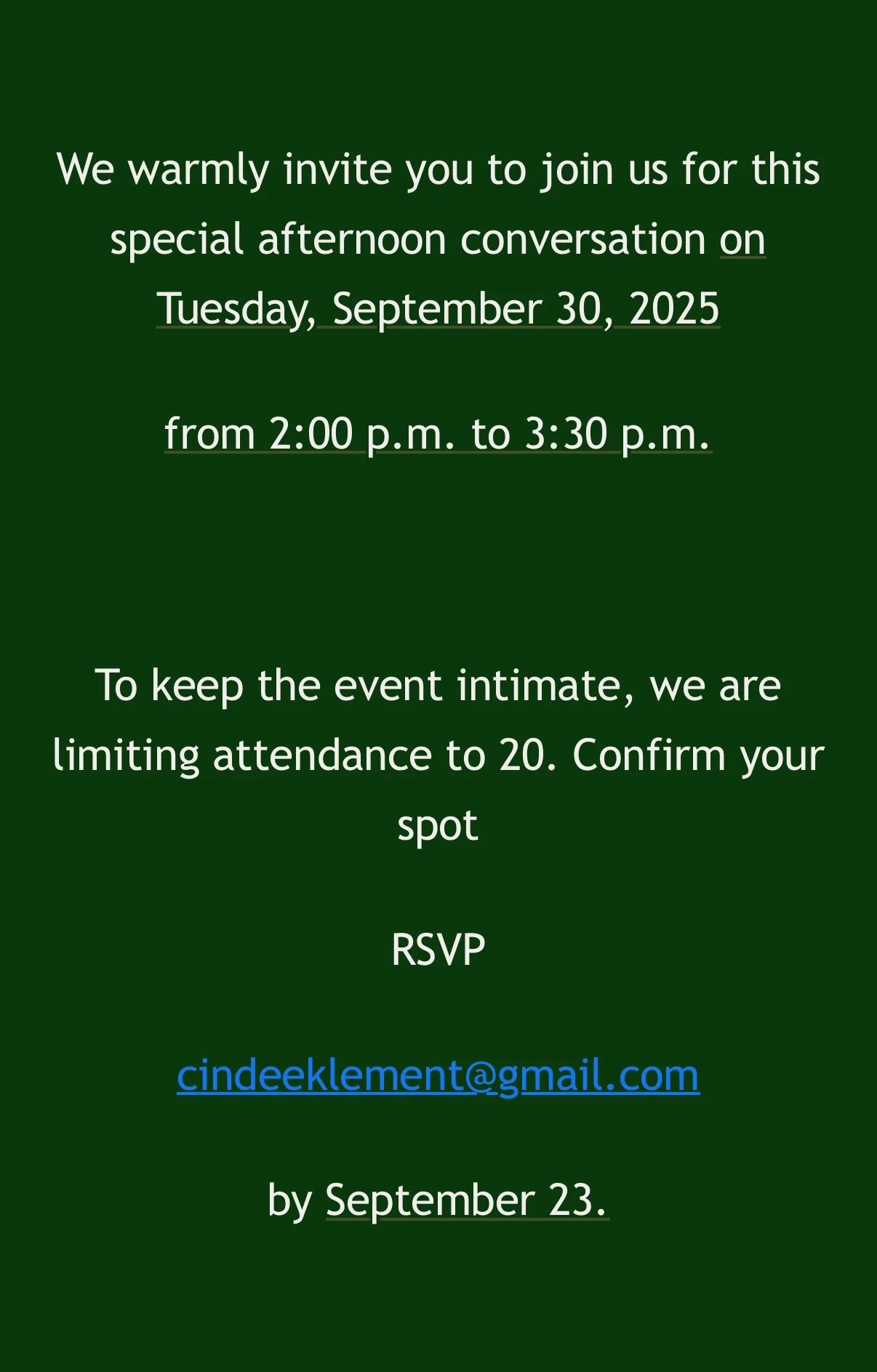
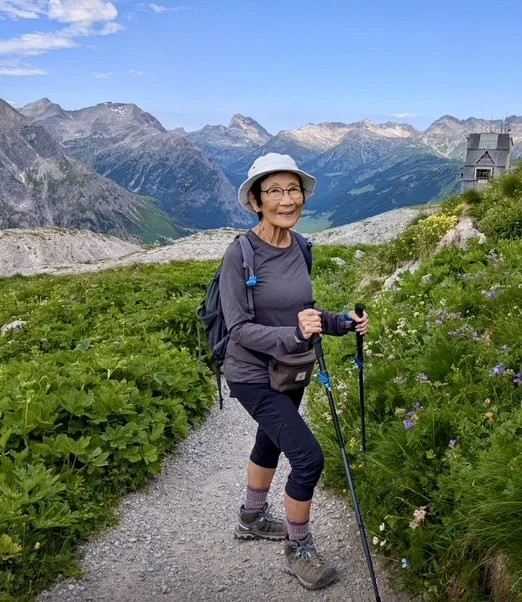
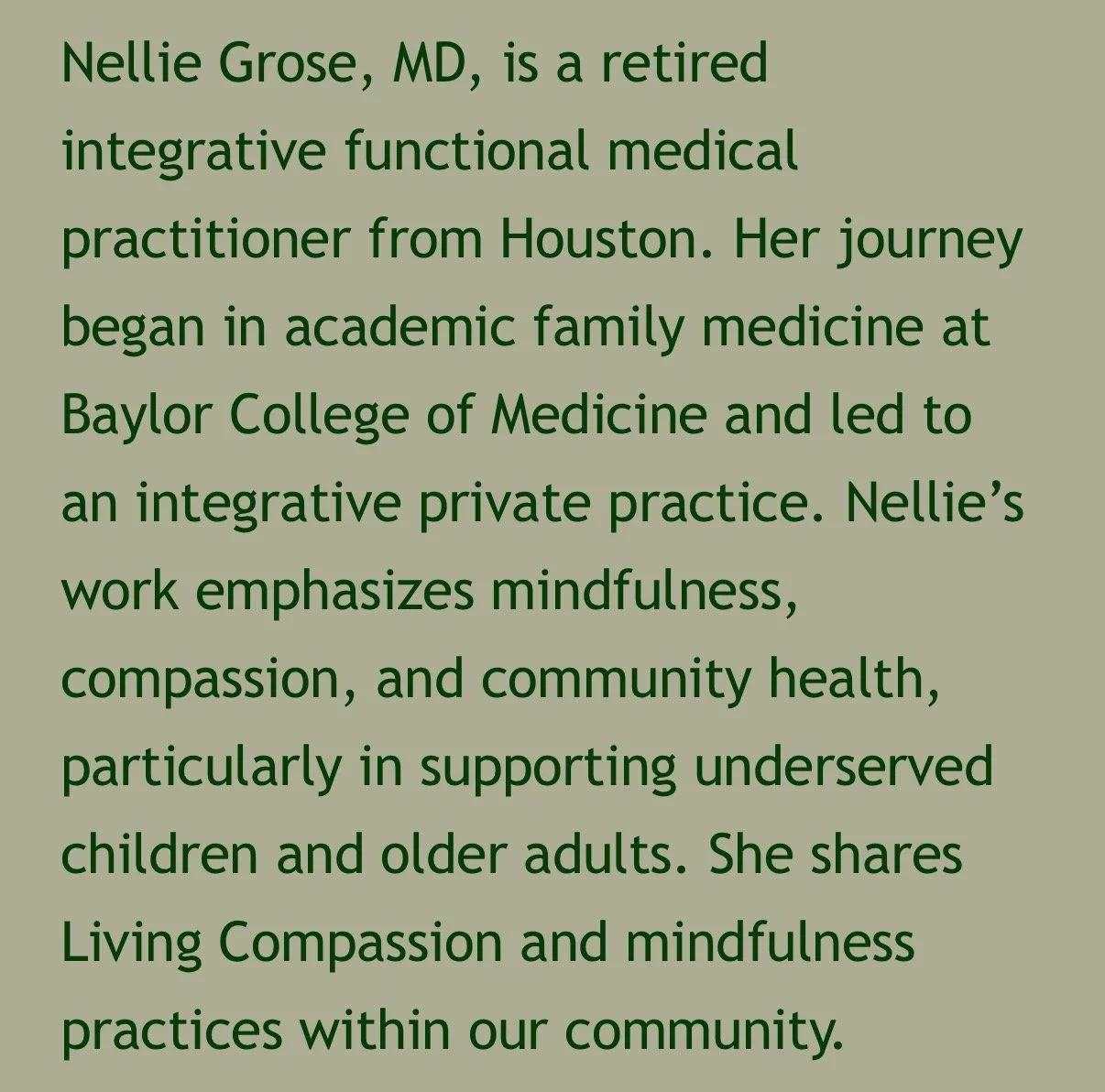

image by Wolf Mac Lean
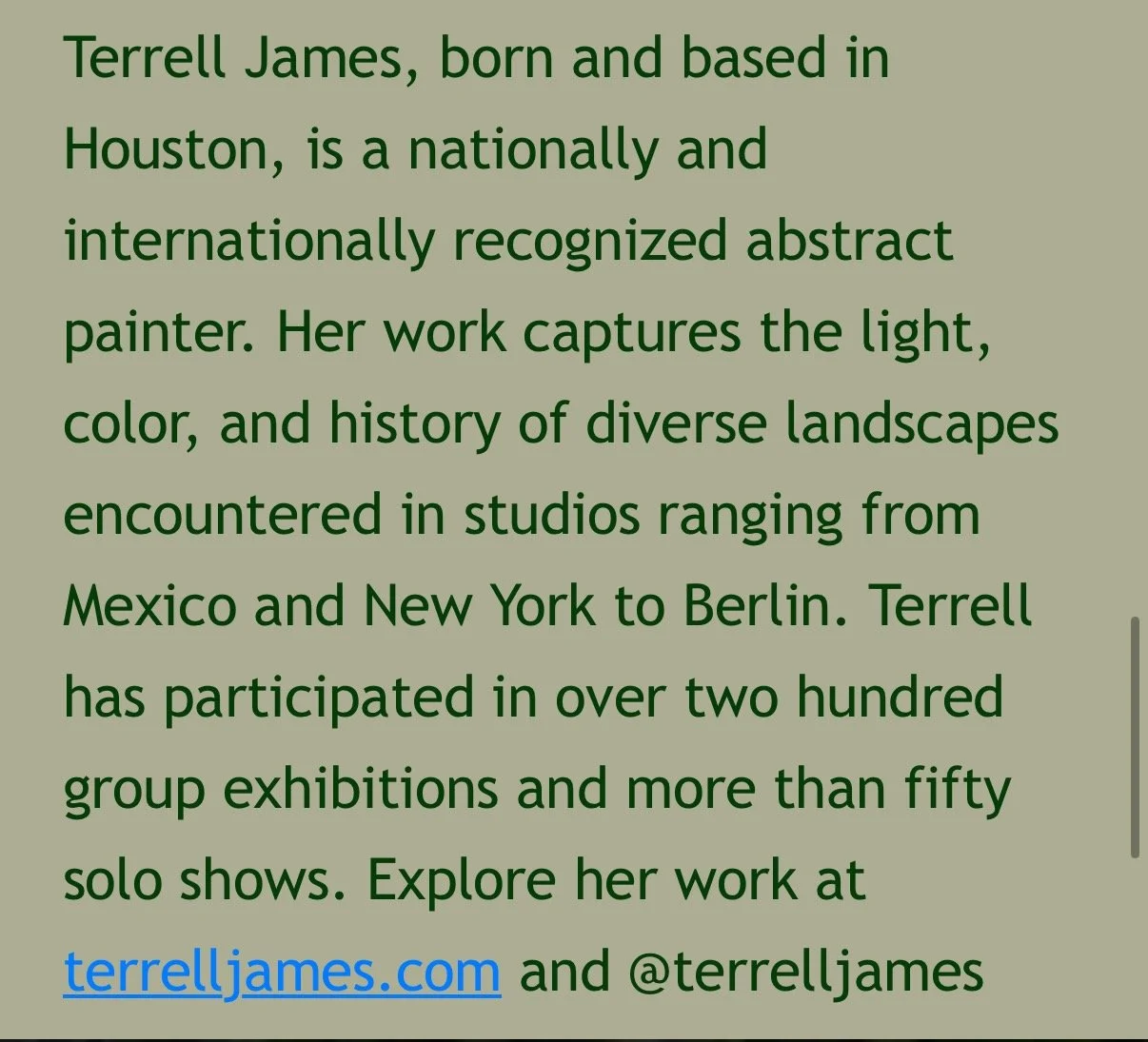
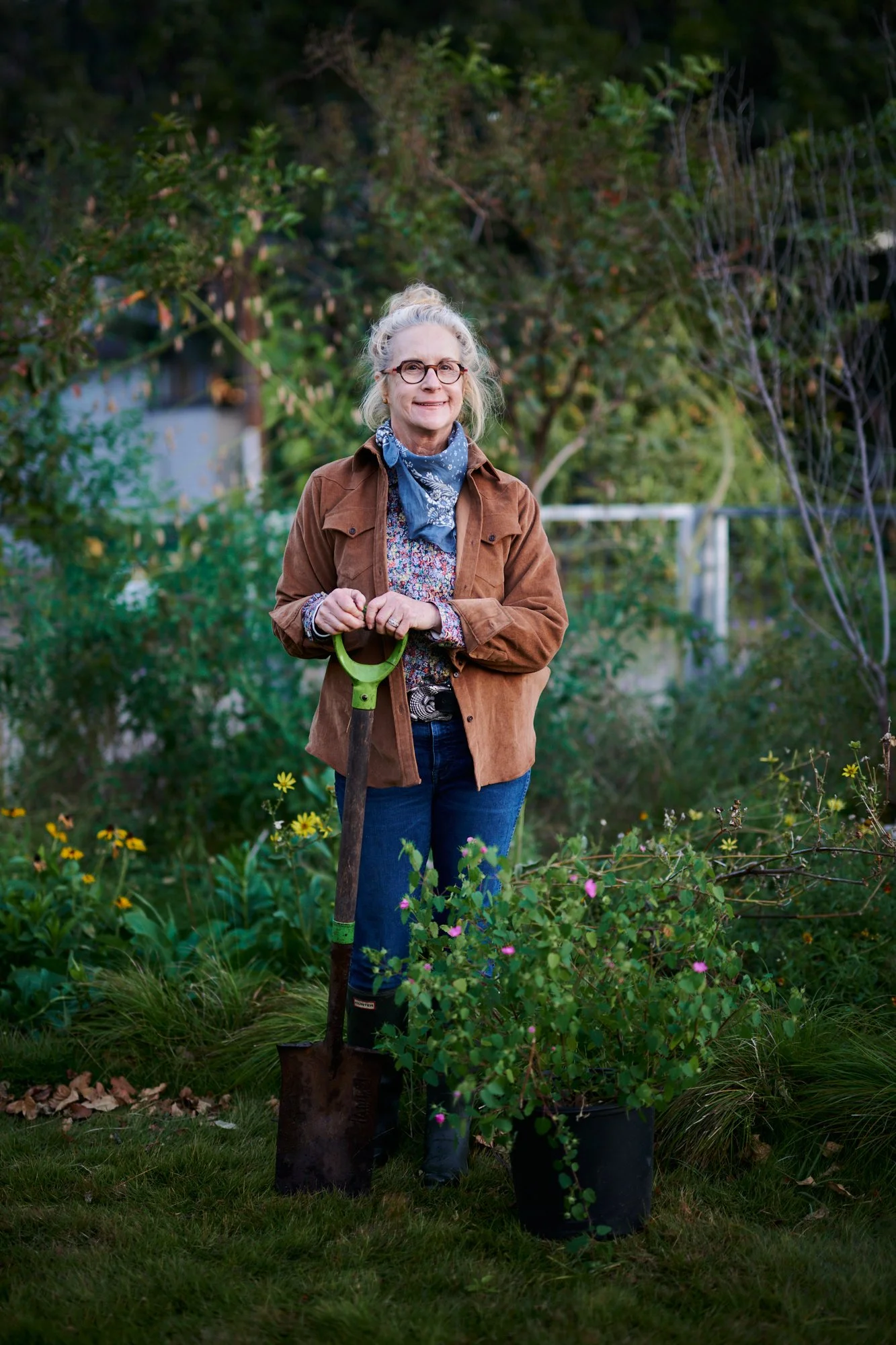
image by Jake Eshelman
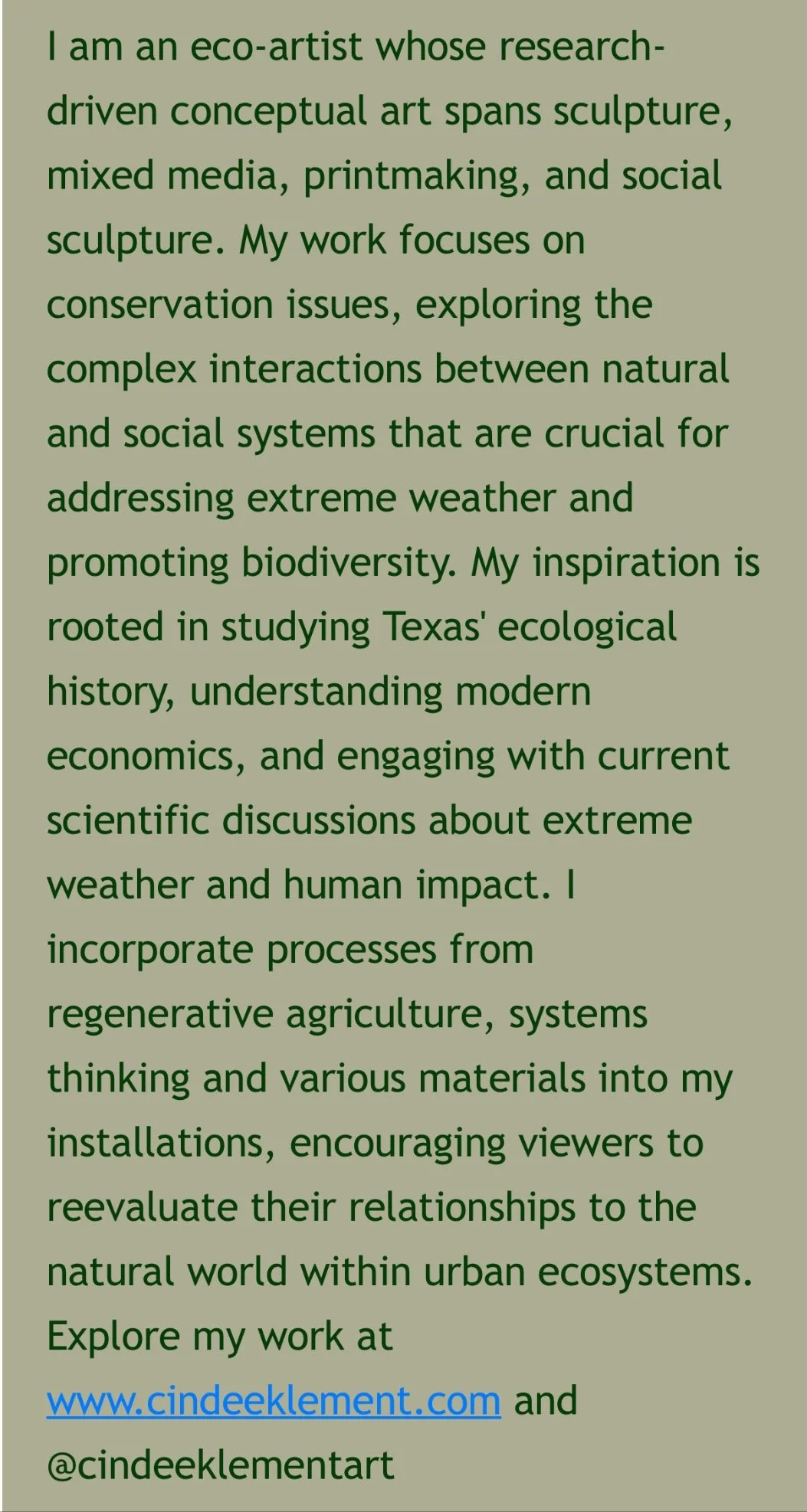
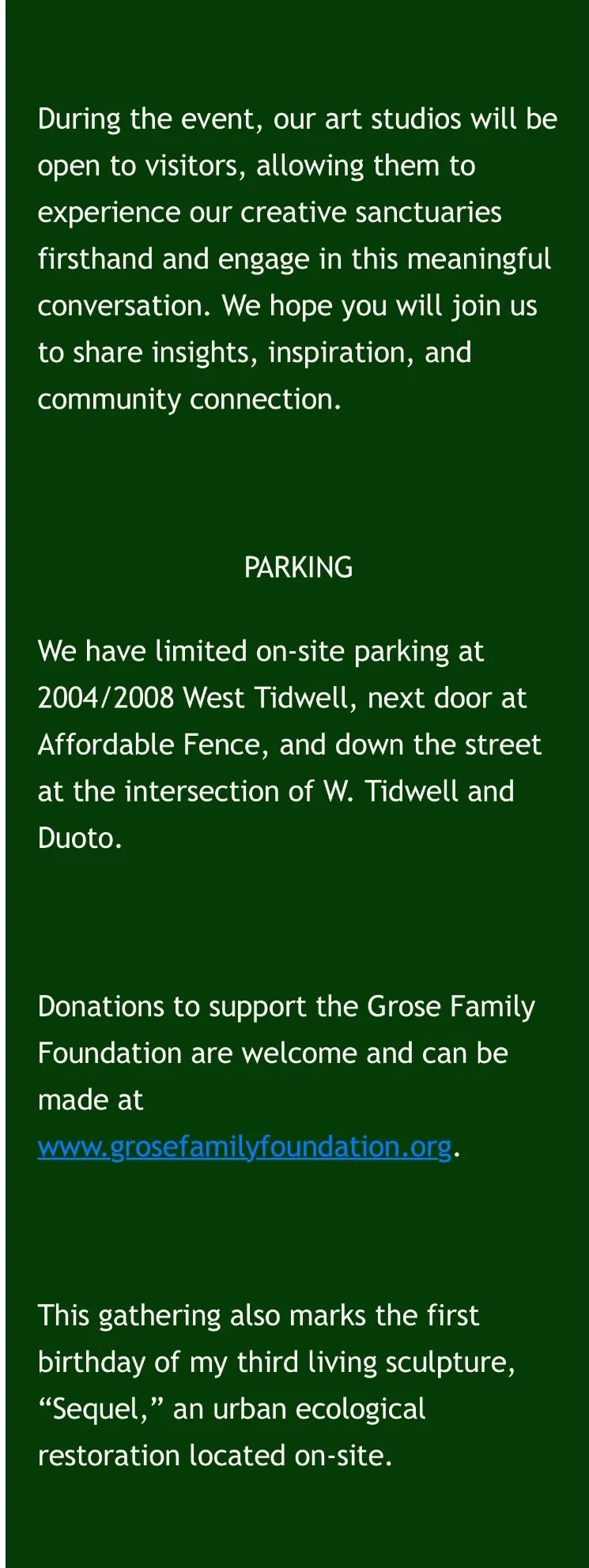
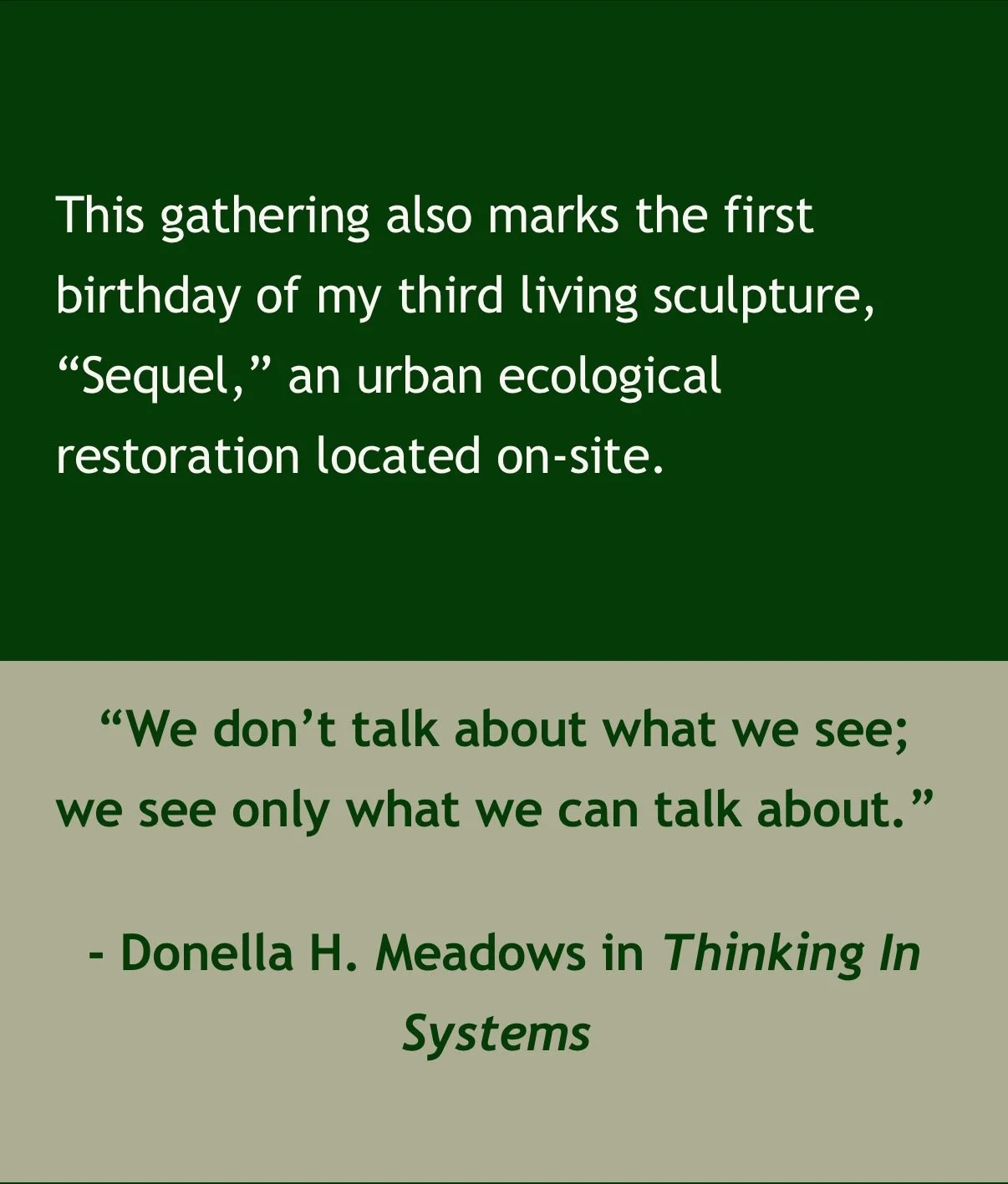

Integrating systems theory into my art practice has influenced my work in many ways. It is one of my core beliefs that in order to save the planet it is imperative that every organization, be it large profit-driven or small non-profit, commits to embedding an environmental ethos into their core values. The place to start is with an organizations mission statement.
In a serendipitous encounter with an acquaintance from a prestigious art institution this weekend, I learned of their significant reorganization. I suggested that every institution embed an environmental ethos into their mission statement and then I thought - even Throughline. Throughline is a newly organized Collective that I am a member of.
Today I discussed these thoughts with fellow Throughliner Caro Otero a gifted artist and caring human being. Caro and I are part of the Throughline facilities committee. We discussed that there are steps we can take to improve our day to day operations and become better stewards of the planet.
Envisioning a profound commitment, we proposed to the administration committee to incorporate this spirit into Throughline's mission statement:
It could read something like this-
We vow to serve as Earth's custodians, honoring its natural rhythms. Embracing accountability for our environmental footprint, we strive to operate conscientiously, leaving a positive mark through purposeful actions. We are advocates of planetary regeneration.
Or something that says Throughline cherishes nature and restores the environment through conscious daily actions.
In our role in the facilities committee, Caro and I will examine Throughline's everyday activities as an organization and consider ways to operate more responsibly and advocate for the planet. We will re-evaluate these procedures annually.
Please pass this idea on to your organizations and incorporate planetary responsibility into your bylaws.
Besides making greener choices in the products we buy, such as disposable cups and beverages, our treatment of urban landscape and protection of Earth’s living soil is a powerful way reduce our carbon footprint and support biodiversity.
There is tremendous power in the collective action of small acts.


October 11th was the end of the first leg of my residency. The experience truly supports the statement you don’t get what you want but you always get what you need. I did not seek out the residency but I can see how it is helping me take my Social practice to the next level.
It is giving me the opportunity to use; the symbolism of a labyrinth, the regenerative symbol of a bison, the turfgrass of an institute of the US collegic system to change societal habits. These features alone are rare and hard to come by resources.
Exploring the campus and discussing my plans with all who would listen resulted in IU providing me with the opportunity to add a few more layers to the work. Specifically conceptualism, archeology and anthropology.
Conceptualism- The Eskenazie Museum on IU’s campus has one of the three complete collections of Marcell Duchamps readymades. Seeing these pieces of Duchamp the father of conceptualism from the 60!s and 70’s gave me the idea that my work at Indiana would be more impactful if it is conceptual.
As I began to plan the labyrinth design and installation I began to see how beautifully Conceptualism works with Social sculpture. If I create the concept and the design the steps to install it and the students implement my concept and design it becomes theirs. It won’t be my art they assist me with it will be their actions taking meaningful steps.
The last Monday at IU in a meeting discussing the actual installation process with one of the professors and directors of the Hilltop Gardens it was suggested I work with the anthropology department and Archeology departments when I return. Archeologists will be enlightening when it comes to installing the grid. The Anthropology department can help facilitate a possible relationship and sharing of culture between the students of the First Nations and the students who do not have a deep connection to the land. I would like the installation to be a catalyst for the two groups to develop a unified way forward, a new tradition or ceremony that will give them all together a personal connection to the landscape and the biodiversity it will support.
The next step is to get the University wheels to approve a site. To be the most successful the site needs to be a sea of turfgrass, have full sun, be spacious enough to accommodate the 85’ X 54’ bison, and accessible to the students and community.
I am thrilled to announce that in late January 2024, IU selected a sloped plot of The Hilltop Gardens for the installation.


Related blog posts
A labyrinth of what shape? http://www.cindeeklement.com/blog/2023/10/2/what-kind-of-labyrinth-a-seed-a-beautiful-design-a-bison-that-is-the-question
The design
http://www.cindeeklement.com/blog/2023/10/8/the-labyrinth-design-how-will-it-be-installation
From 8” X 10” to 53’ X 85’
http://www.cindeeklement.com/blog/2023/10/7/how-do-you-build-a-labyrinth

In the above image the wrench represents industry and the butterfly the natural world.
For those with philosophical minds, it’s fascinating to explore how language shapes our understanding of the world. The power of words extends beyond mere communication; it molds our perceptions and influences the way we interpret reality.
Consider how our dominant cultural values can impact our vocabulary and ultimately shape how we perceive things. If our society places highest importance on industry and financial gain without regard for environmental consequences, our language will reflect that mindset.
Our perception of the image and the world is shaped by our language. If our main focus is on achieving economic success at any ecological cost, then our vocabulary reflects these thoughts, and these thoughts in turn influence how we value ecology. Take a moment to consider this image of a butterfly and a wrench.
What do you perceive — a wrench supporting a butterfly or a butterfly struggling to withstand the pressure from a wrench?
We can use this knowledge to change society – by analyzing the relationship between language and perception, we can start to question and challenge these dominant narratives. We can choose to broaden our vocabulary, incorporating words that prioritize environmentalism and regeneration.
Imagine if everyone shifted their linguistic focus towards promoting regenerative practices, valuing nature, and taking responsibility for ecological well-being. This change in vocabulary could create a shift in perception – from viewing nature as something to exploit for financial gain to recognizing its inherent value, fragility and it’s power.
So let me ask you again: How do you perceive the image of the butterfly and the wrench? We have an opportunity to reflect on the power of language, challenge conventional thinking, and work towards creating a more regenerative future for ourselves and generations to come.
#ecoart #socialsculpture #wrench #butterfly #language #womanartist #texas #houston #cindeeklementart
“What I propose, therefore, is very simple: it is nothing more than to think what we are doing.”
-Hannah Arendt, The Human Condition

Heat Dome
Watercolor monotype
30" X44"
Bare ground, concrete, asphalt, and astroturf emit 4X radiant heat. Great masses of radiant heat create heat domes. Heat domes prohibit weather from moving across the land. In contrast, surfaces covered in thick layers of plants indigenous to the region store water in the soil. When the day warms, the plants transpire, releasing bacteria with the moisture to form clouds that provide shade and then rain. We each need to carry our ecological weight. We can start by considering new ways to surface our city scapes to cool the planet.

Heat Dome ghost

Moving Forward
67” X 15” X 18”
Image by Jake Eshelman
Found object concrete and rebar curbing fragment, rusted steel, bronze, and gold leaf.
Moving Forward consists of two rectangular concrete curb fragments and two cast bronze roots, the latter with gold-leaf patinas. These objects are tethered like irregular beads strung on a wire of rusty rebar falling to the earth.
The fractured concrete and the more extensive root land at the forefront in a forward strutting anthropomorphic structure. Growing behind the long-necked bird-like form, a stem of rebar twice the creature's height reaches for sunlight. The meandering stem is counterbalanced with the smaller root in a lyrical passed sunflower shape.
The weighted composition invites viewers to reimagine the relationship between our engineered landscapes and ecological systems to support wildlife and forge a path toward a regenerative future.


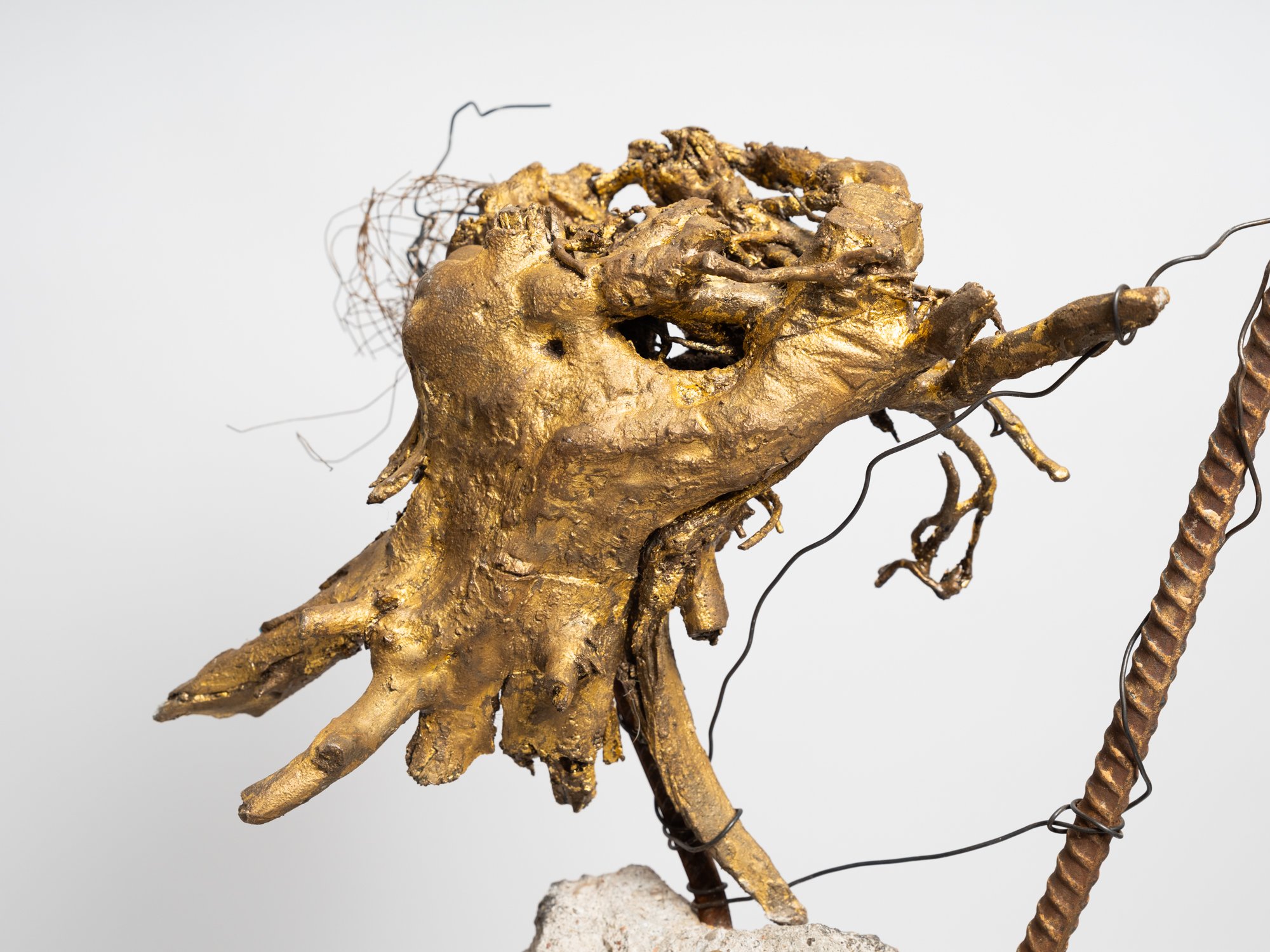


Interdependence
60” X 10.25” X 10.25”
Image by Jake Eshelman
Texas Bricks, Paint, Plastic Dome and Base, Vintage Globe Bank, Prop $100 bills, Coins from a diversity of economies, Paper Wasp’s nest on Maple tree leaves, Seashell with barnacles, Red swamp crayfish, bird nest, feather of a Pileated Woodpecker, Blue jay feathers, Mantis, Cicada, Great Purple Hairstreak, Tropical Checkered Skipper, White Peacock, Red-spotted Admiral, Monarch, Red lacewing butterfly, June Beetle, Eastern Carpenter bee, Wolf Spider, Beebalm, Sacred Datura, Bundleflower and various dried leaves.
Artist Statement
Interdependence is built from a collection of TEXAS-stamped bricks washed with a white patina. In a staggered stacked square skyscraper form, the bricks shoulder a transparent dome and base, crowned with a vintage Globe Bank finial.
Within the transparent dome is a still-life collection of intricately connected elements from natural and human-made systems. They wreath a "Houston" stamped brick fragment.
By using everyday materials that we typically associate with urban environments, the work conveys that the collective actions of Houstonians, living in a dense population center with a sprawling footprint and long growing seasons, have far-reaching implications for global economies. It is a reminder that our choices impact not just our immediate landscapes but global eco-systems as a whole.
This sculpture is not a warning. It presents a solution. I employ systems thinking to suggest that embracing economic systems is necessary to recover biodiversity. Economic systems dominate our culture and intimately impact natural systems. Houston's ecology and commerce can potentially create a new economy - an ecotourism industry. Houstonians can transform the negative impact of industrialization, commerce, and urbanization into a source of beauty, wonder, and economic growth by advocating for our natural habitats.
Interdependence invites us to rethink our individual relationship with the planet’s biodiversity, recognize the value of our natural heritage, and embrace the idea that supporting wildlife is a global responsibility dependent on a collection of individual acts.









In her book Beaver Land, How One Weird Rodent Made America, Leila Philip spends a chapter on Lewis H. Morgan's (America’s first Anthropologist) documentation of The American Beaver written in 1868. Lucky me, I have found a copy. I am wondering how this read may impact my work.
During a captivating walking tour of Buffalo Bayou in the early 2000s, led by an esteemed Master Naturalist, my fascination with beavers was sparked. It all started when we stumbled upon a tree stump adorned with telltale markings of these industrious creatures. Surprisingly, our knowledgeable guide harbored a deep dislike for beavers, prompting me to question their significance within the ecosystem. Alas, our Master Naturalist was left speechless, unable to provide an answer. As an artist documenting my practice, this encounter left me pondering the enigmatic role of the beaver, and the profound impact it holds within our natural world.
Just as bison’s behaviors shape our land ecosystems, beavers are the architects of thriving water and marsh ecosystems. Considering that water is the key to cooling our planet. To truly comprehend nature’s cooling mechanisms, I recognized the need to understand the Beaver and how their work may connect with the bisons and how humans can mimic these systems in urban landscapes.
As someone devoted to capturing the wonders of natural history and integrating them into our human-made structures, I’ve been amassing a collection of historical writings on natural history. I am looking forward to learning from this new addition to my collection.
In Morgan’s book, he delves beyond the surface-level characteristics that most naturalists focus on, offering a profound perspective.
Leila Philip‘s book is a thorough overview and introduction to a contemporary view of the Beaver. I will probably rerread Philip’s book overtime.
I want to know about the Beaver before the Railroad and what beavers think and how they work, what inspires these creatures to do what they do. Morgan’s book is that and more.



Once the grid is installed, the next step is to think about how to divide the work so that groups of student and volunteers can install my vision. .
Two options seem viable. The first idea is by marking the (X, Y) coordinates for each circuit of planting on individual pages. The other idea is by verticle rows.
Below I have marked the coordinates of the circuits. As I mark the coordinates I am not sure this is the way. I may need to break it down to smaller sections.




I can continue to consider how to breakdown the jobs as I begin building the grid.
Scaling up the drawing I also wanted to incorporate another layer of interest in the piece - the ruminant's digestive system.
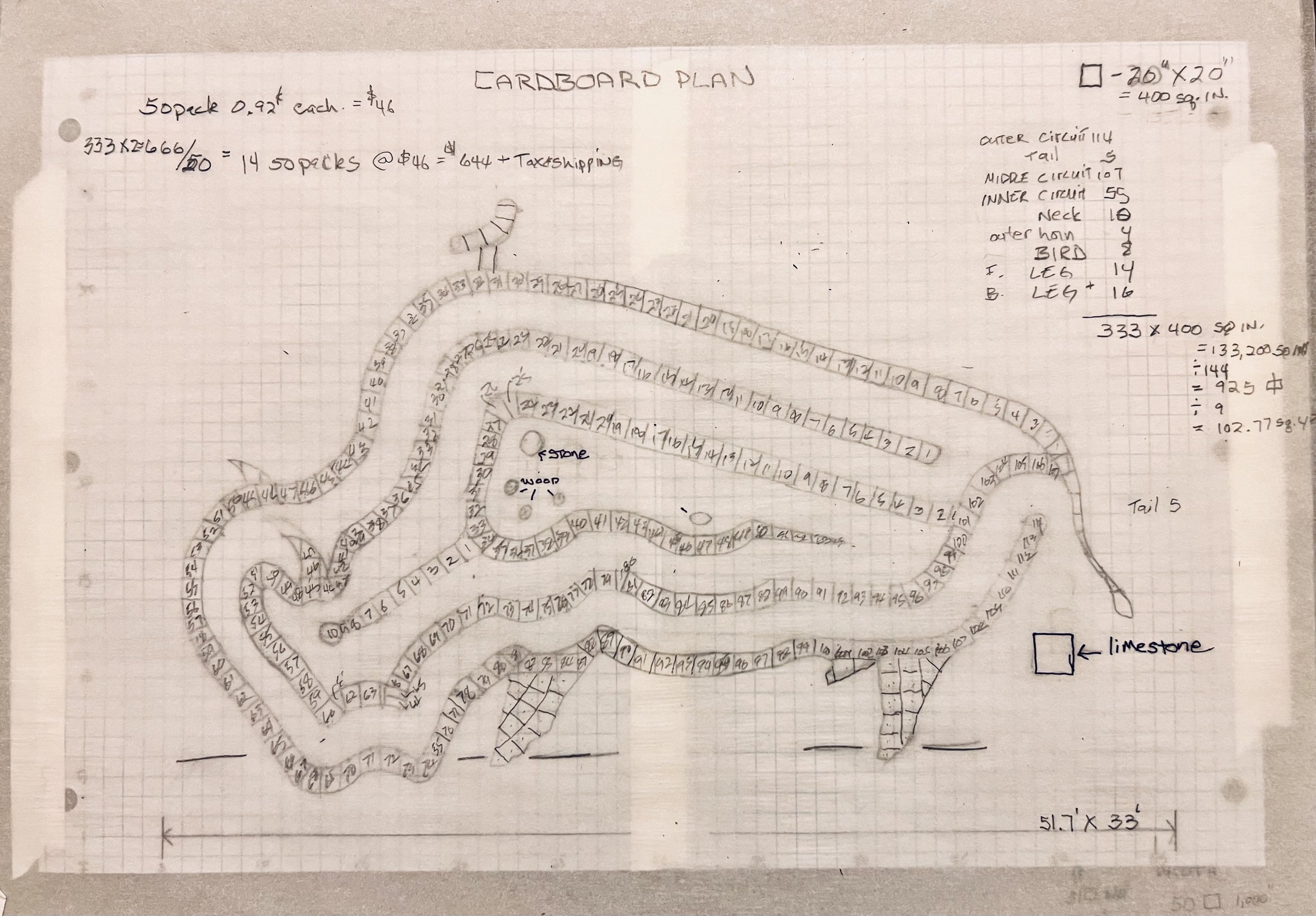
Before the digestive system and with shorter legs.
In order to add this intestinal circuit his abdomen and hump had to get larger to allow for the walking paths on either side of it. The wider girth made his legs look like stumps so I lengthened his legs.

After the digestive system and leg adjustments.
How to go from an 8” X 10” paper to a field, Is the question ruminating in the back of my mind every day.
Unfortunately Bloomington is in between art supply stores. As a result I could not buy locally any paper larger than 8” X 10” . While I waited for an order to come in I pieced together 8 - 8” X 10” pages and scaled it up 2X.

When I scaled it up 2X I started seeing that I could take it to any size I wanted by using (X, Y) coordinates. I am using a 20” scale.

8- 8” X 10” paper to a make a 18” X 30” sketch.
How I could get a 83' × 54’ rectangular grid with right angles on a field was a big concern.
An idea came to me when I toured the charming Wylie House, a fascinating piece of history nestled just off campus. This historic gem, built in 1835, was once the cherished home of Andrew Wylie, the inaugural president of Indiana University.

The Wylie House master bedroom.
During my visit, the knowledgeable docent unveiled a captivating detail - the simple rope framework that upheld the mattress.

The antique bed’s rope framework that supports the mattress. What looks like a cup is the chamber pot.
A rope grid might be the answer to getting a proper rectangle With right-angled corners and grid onto a field.
This visual solidified my strategy for bringing the labyrinth design from paper to reality in an open field. The framework I need is 83’ × 54’ the vertical and horizontal ropes that cross every 20”. We can twist tie the coordinates together making the rectangle form.
I wrestled with this question. There was not anything in either of Kurt Vonnegut’s books that inspired me. I do feel he wrote about what he knows and my work should be true to my own heart. A list of the obvious came to my mind- butterfly, chrysalis, beatle, seed, flower, IU letters…….
After a full day at the Eskenazie Museum on IU’s campus I was intrigued by this piece.

The museum label read-
According to traditional Bamana beliefs, an energy or force called nyama animates the universe. Objects such as this boli are made to harness that energy and use it for the benefit of the community. The thick, crusty surface is the result of offerings such as millet, other vegetal matter, beer, and chicken or goat blood, all of which are applied to attract nyama and serve as physical evidence of its presence. A boli does not represent a particular creature.
It is kind of perfect., should I make another bison? Can I make a Boli bison labyrinth?
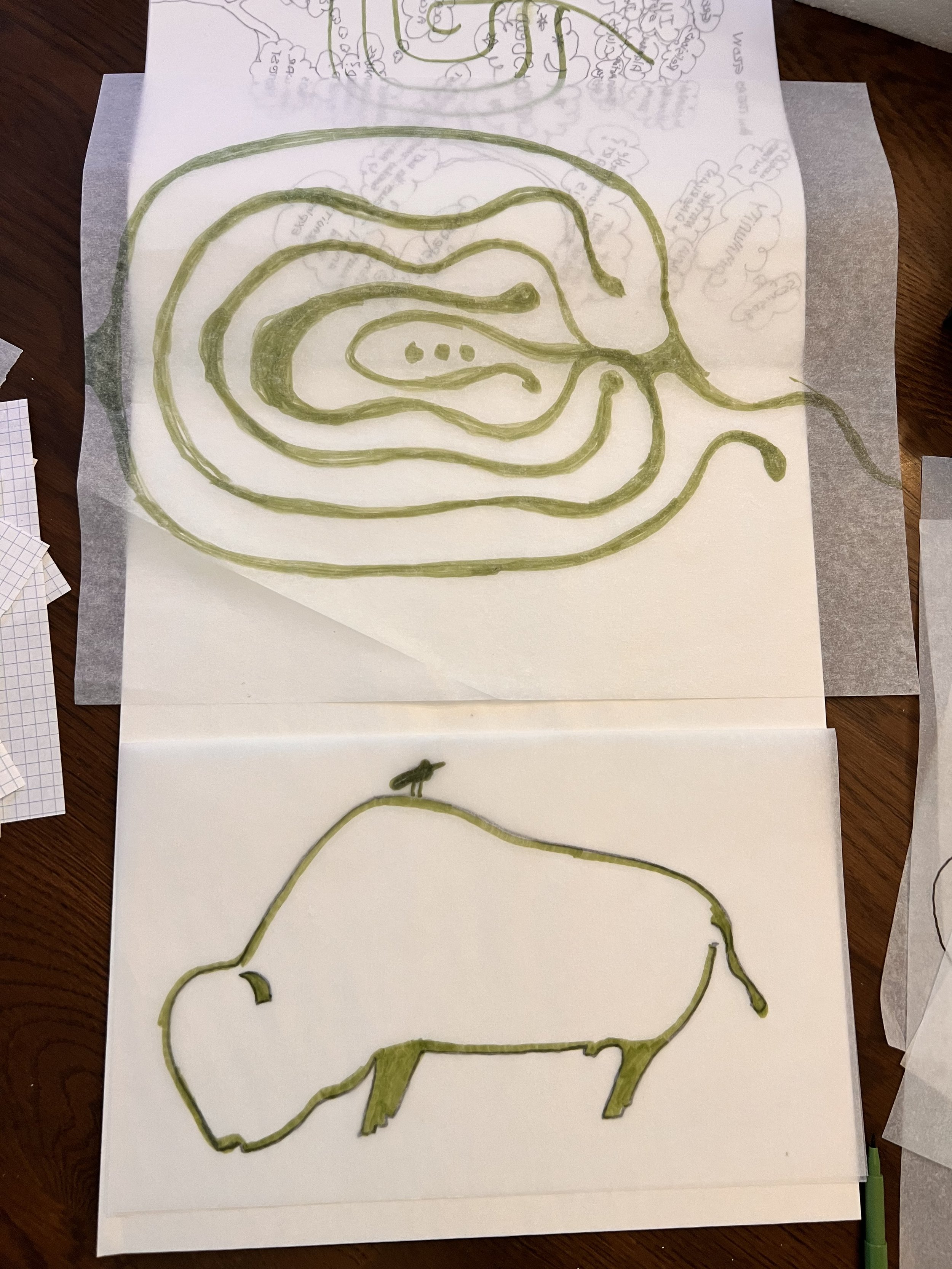
I can see it.
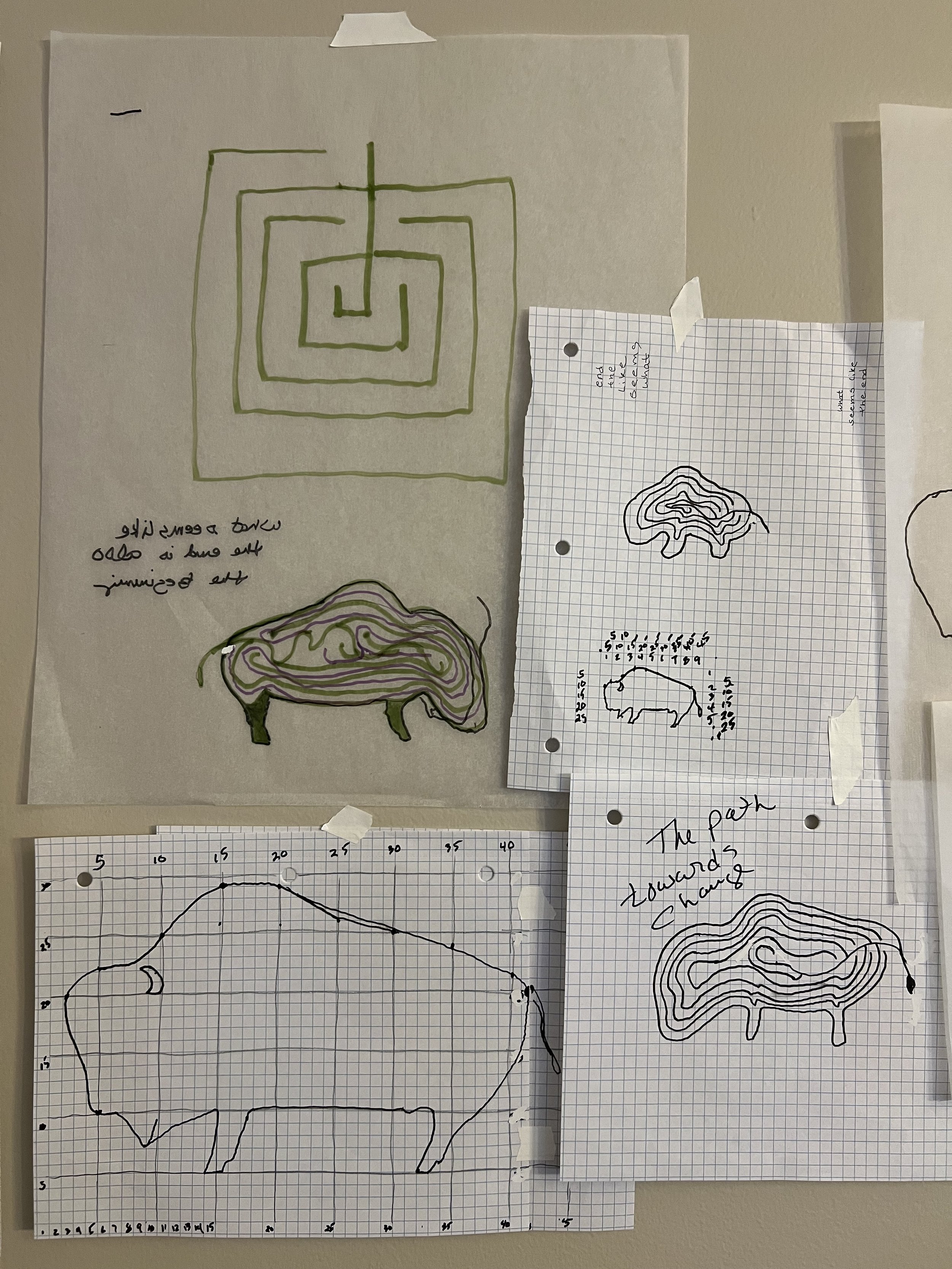
Here are the steps I took
More to come tomorrow.
During the first week of my residency at IU when I wasn’t exploring the city, University, art, museums, ecology, architecture, and landscapes I was experimenting with labyrinth designs.

Some sketches of three different types of kabyrintgs.

This design starts with a simple cross. I need to keep this simple.

Turning the cross/square labyrinth upside down I decided to attempted a seed labyrinth. I think a design less feminine will be better.
Living the Dream as an Artist in Residence at Indiana University!
I couldn't believe my luck when I was offered the opportunity to be an artist in residence at Indiana University. Not only would I have access to all the incredible resources and opportunities of a renowned research university, but it could provide the opportunity to fulfill one of my monumental artistic visions.
As part of my two month residency, I'll be giving artist talks, exploring local artist studios, landscapes of southern Indiana, and creating a special piece to be exhibited at the University or in the beautiful town of Bloomington.
During my interview for the residency, I couldn't help but ask about the size of the campus. And just as I suspected, it is massive. I imagined it with expansive fields of turfgrass. I remember feeling my heart swelling with excitement and hope. Could Indiana University be the site for the monumental installation I dream of?
Let me explain - This summer seeing CARBONsink develop within Symbiosis at Lawndale Art Center and watching the community enjoy entering it made me think. I wondered if the CARBONsink relief was a step to create a larger piece using the same process but with a deeper meaning and making a bigger impact. A little bit of research regarding Greek philosophers and labyrinths and these thoughts turned into a dream. I have a vision of completing a living labyrinth.
I began studying the designs, meanings and histories of mazes and labyrinths. I was lured by labyrinths pretty fast. Mazes are puzzles and meant to confuse you. Labyrinths check all ny boxes.
-A labyrinth is a meditation. —
-There is 1 way in and 1 way out. What seems like the end is also the beginning. It is the perfect metaphor for inspiring ecological - societal perspectives.
-As an artist whose work in the simplest form looks at time and movement a labyrinth is a logical and interesting medium.
-A living labyrinth to convert fields of turfgrass into a living sculpture to regenrrate life.
Typically in an artist in residency one would take some time getting to know the University and the City before propsing their work. I could not contain my excitement so asked if the University would be interested in a site specific living labyrinth? It would be a social sculpture in the form of a relief that demonstrates the steps for turning the largest crop in the US - turf grass into the largest CARBON sink in the US. Ed the Associate Vice Provost for Arts and Humanities responded with great enthusiasm in his voice. Every summer the University and the city of Bloomington celebrate the life and writings of Kurt Vonnegut with the Granfalloon Festival. A living labyrinth would be a fitting art installation in conjunction with the festival.
For inspiration on my drive to Bloomington, I listened to Cat’s Cradle and Slaughter House Five.
To change our environmental path to one of positivity, we need visuals. With that thought, I am excited to share this morning’s experience.
We discover the captivating beauty of Beanblossom Bottom Wildlife Habitat - a living testament to the power of ecological change. Once a family farm for over a century, this remarkable property has been transformed into a thriving wetland sanctuary.
Formerly owned by the Johnson family, since 1898 Robert Anthony Johnson, an esteemed ornithologist and IU professor, dedicated his life to studying bird behavior and publishing research on diverse species worldwide. In 1995, the Johnson family generously donated their beloved farm to the Sycamore Land Trust, marking the beginning of an incredible transformation. Over the years, this once-dry farmland has evolved into a spectacular wetland ecosystem, showcasing various stages of growth and renewal.
If you are interested in regeneration Beanblossom Bottom wildlife is a must. As you explore the grounds, you'll encounter many ecosystems - from old fields returning to young forest, dense forests and lush wetlands to rejuvenating fields and downed tree-filled areas sculpted by tornadoes. These diverse habitats offer a haven for many tree and shrub species, providing ideal nesting grounds for a diversity of creatures. My husband Curtis always looking up identified nine birds : Red-bellied Woodpecker, Pileated Woodpecker, Northern Flicker, Ruby-throated Hummingbird, Blue Jay, Gray Catbird, Green Heron, Tufted Titmouse, American Crow.
I am always looking at the soil, plants and for things living in relationship with the them.
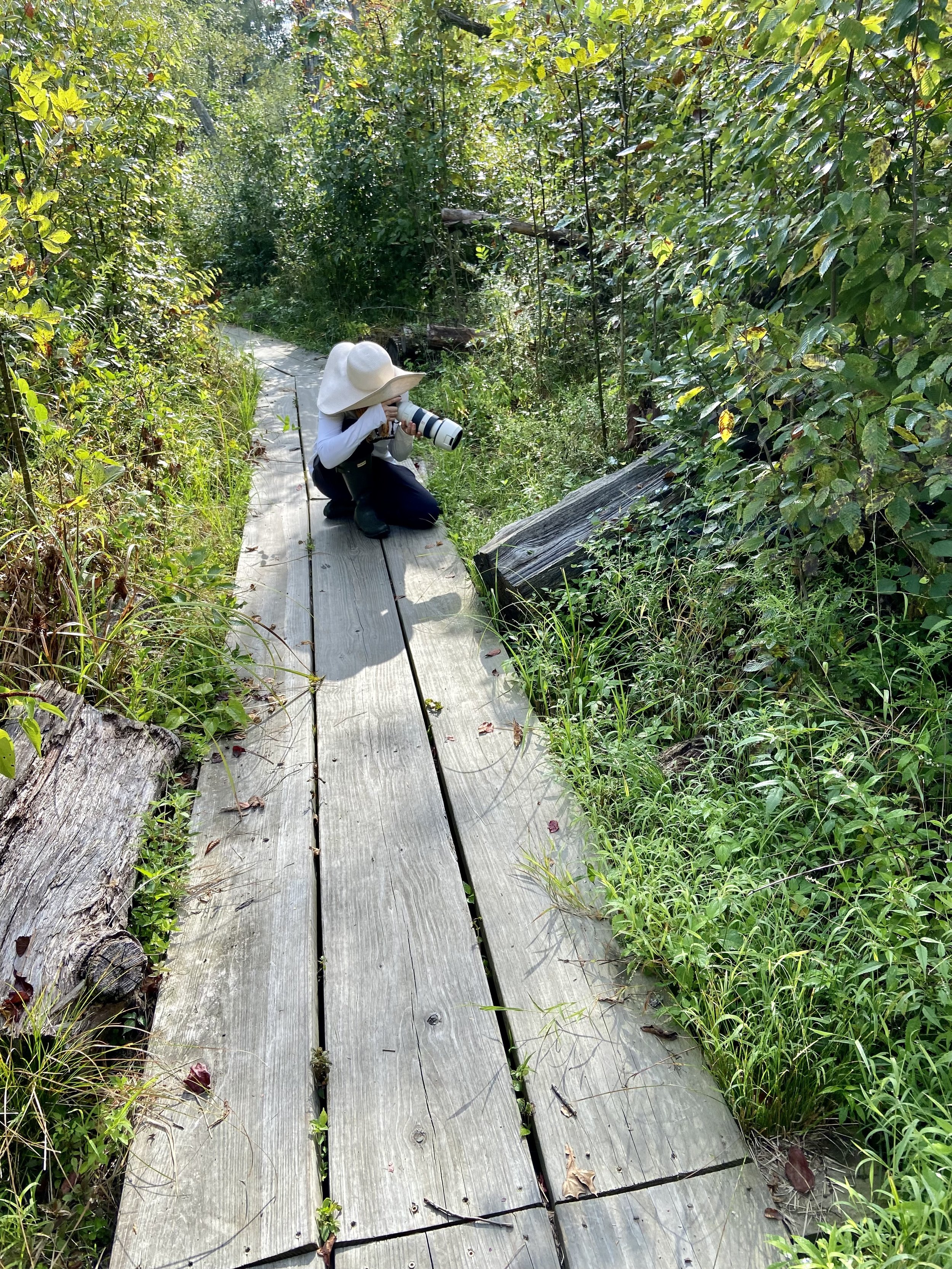
Me in my mosquito protection wardrobe.
Prepare to be immersed in a symphony of nature's harmonious spectacle, where beauty and tranquility intertwine. Embark on a journey through the captivating landscapes of Beanblossom Bottom Wildlife Habitat and witness firsthand the extraordinary power of change.
Below are some images from the morning.

Newly forested area with little lower story plant life and dry ground.

The most important ecological change is due to one species, Nature's Water Engineers the super camera shy Beaver. By building dams, beavers regulate water flow, reducing erosion and preventing flooding. I am hoping my camera snagged an image of one. My cell phone failed.
These industrious creatures also create vital wetland habitats and help replenish aquifers, ensuring the health of our ecosystems.
Their strategic use of wood in the water provides nourishment and shelter for insects, fish and other creatures creating a thriving ecosystem. It was thrilling to see at least two of these eco engineers reminding me of the rol-engineers reminding me of the role beavers play in preserving our natural world.

Northern leopard frog
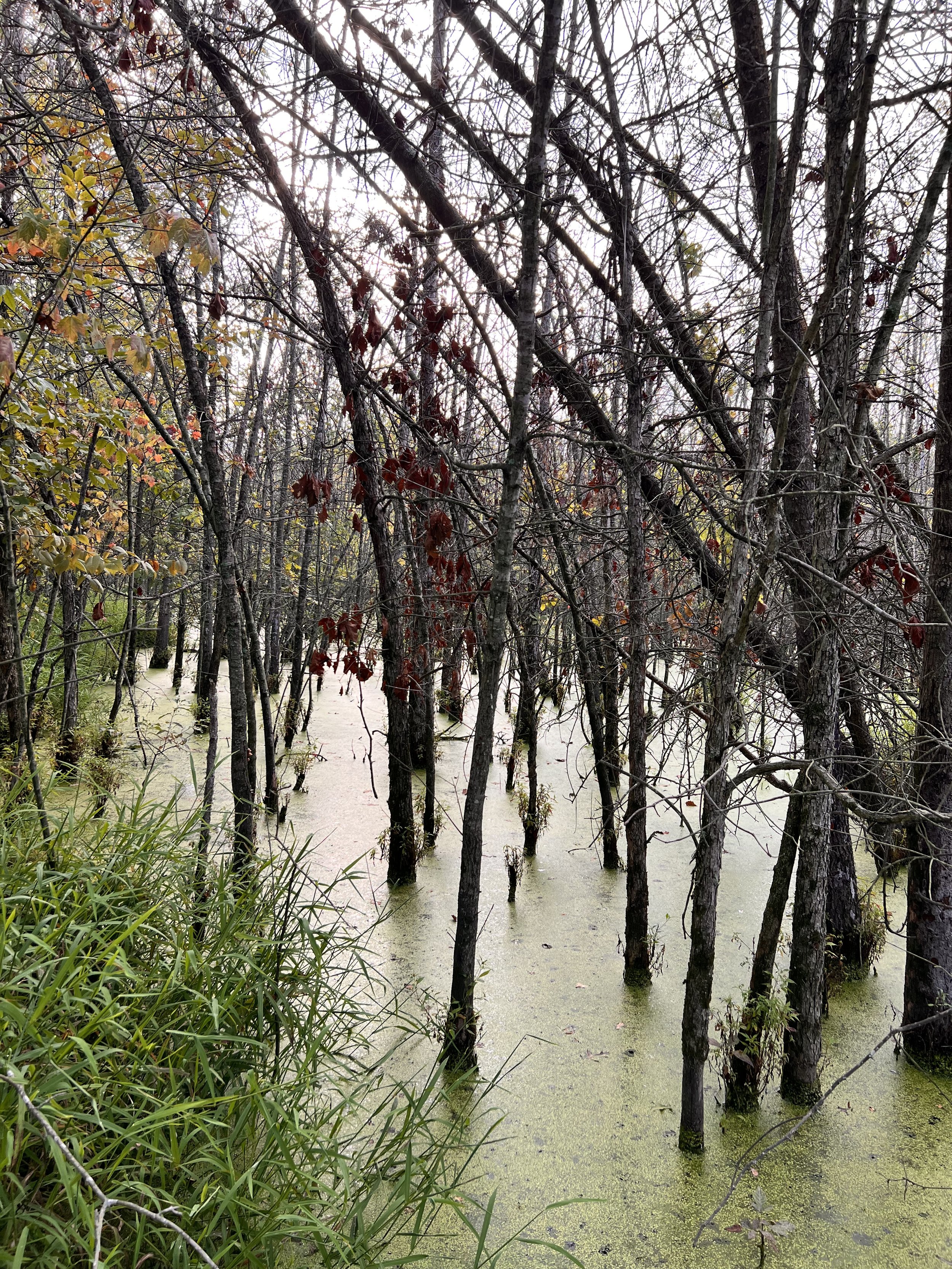
New forests are easy to identify by the lack age diversity in it's tree trunk population. An old forest will have tree trunks of all sizes multiple species and stages of life.
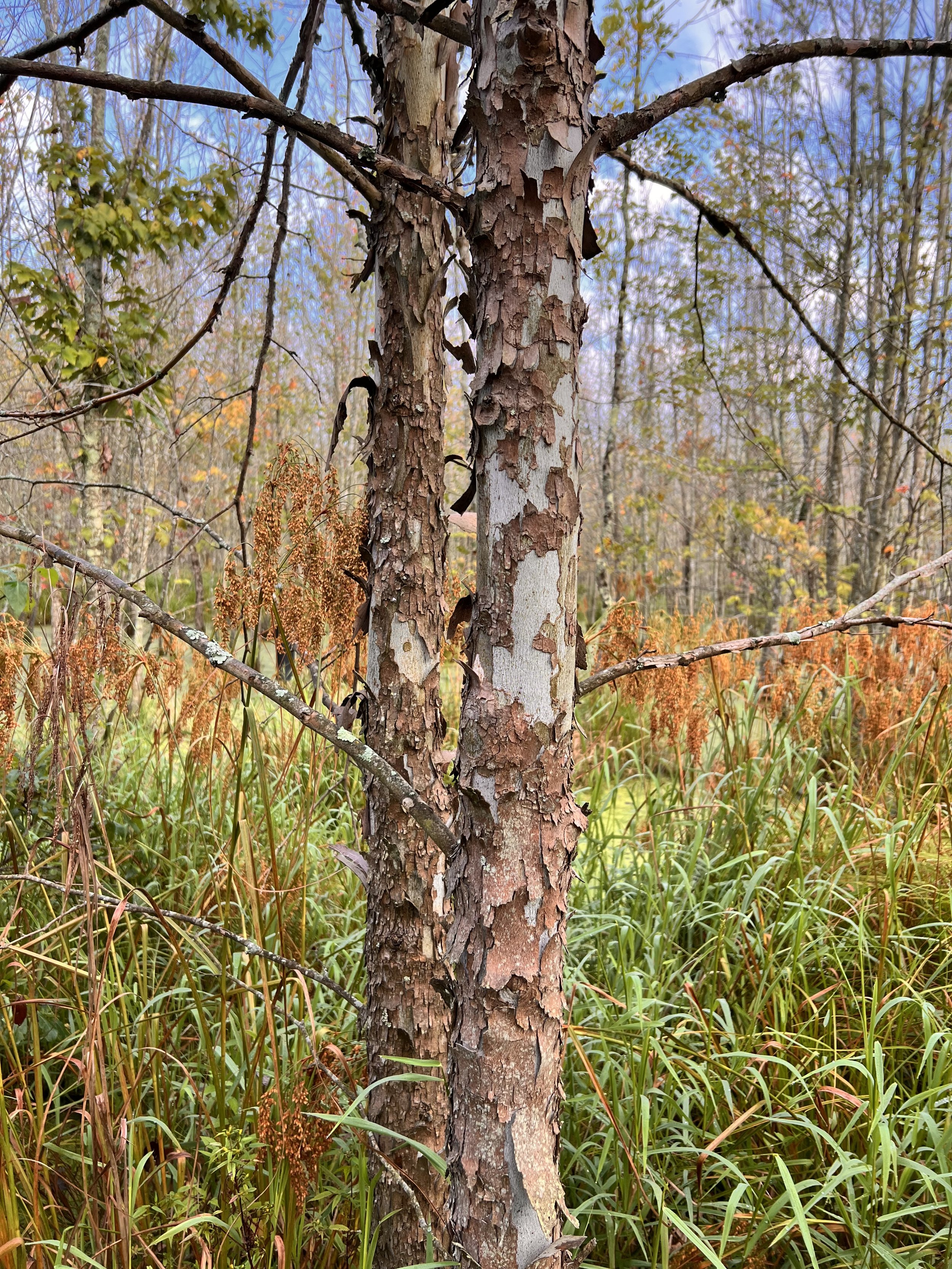
Sycamore trees are tolerant of pollution and are superstars at turning carbon into oxygen. Why do they shed their bark and why don’t all trees shed? - a topic for another day. If anyone knows please share.
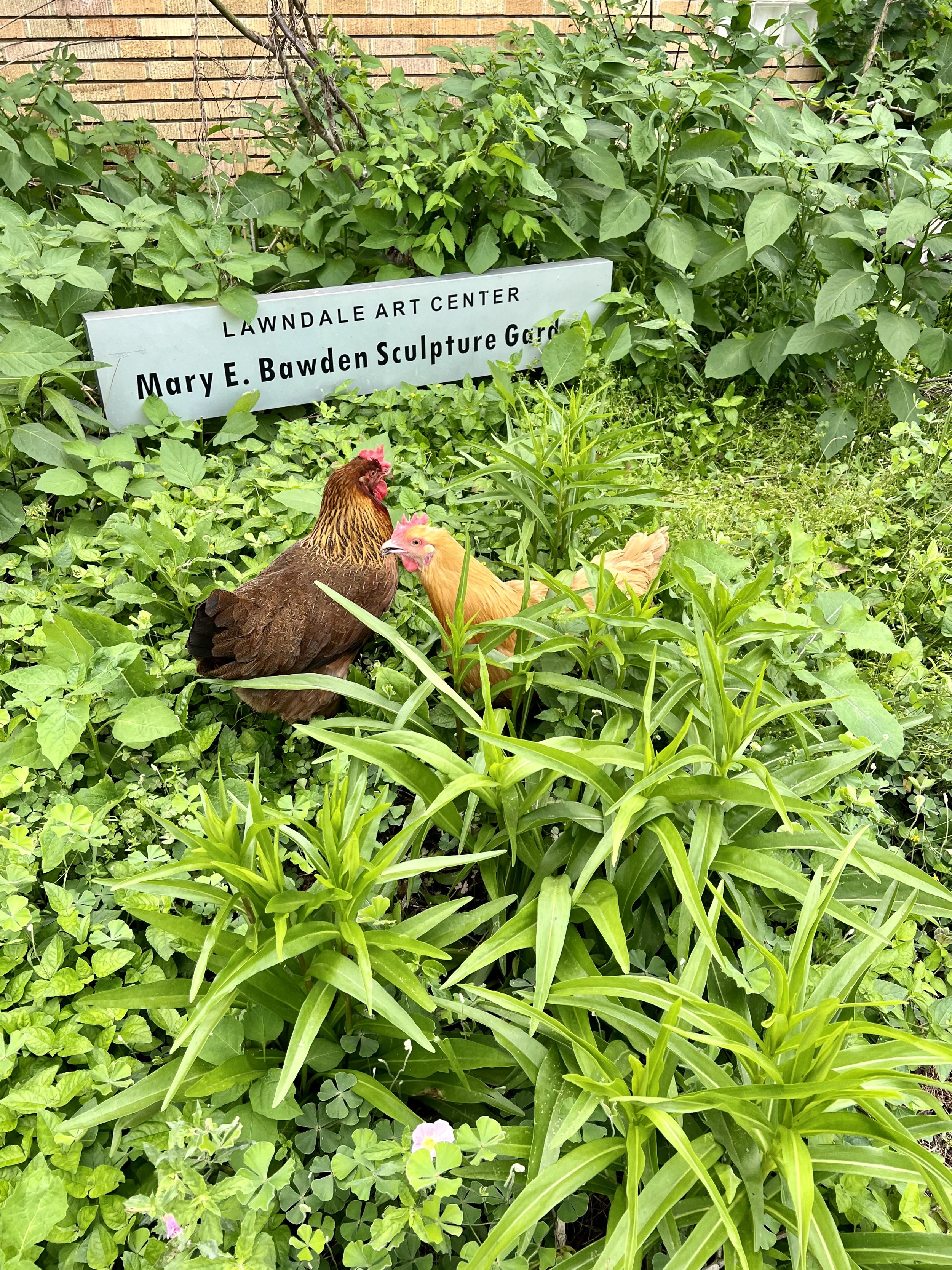
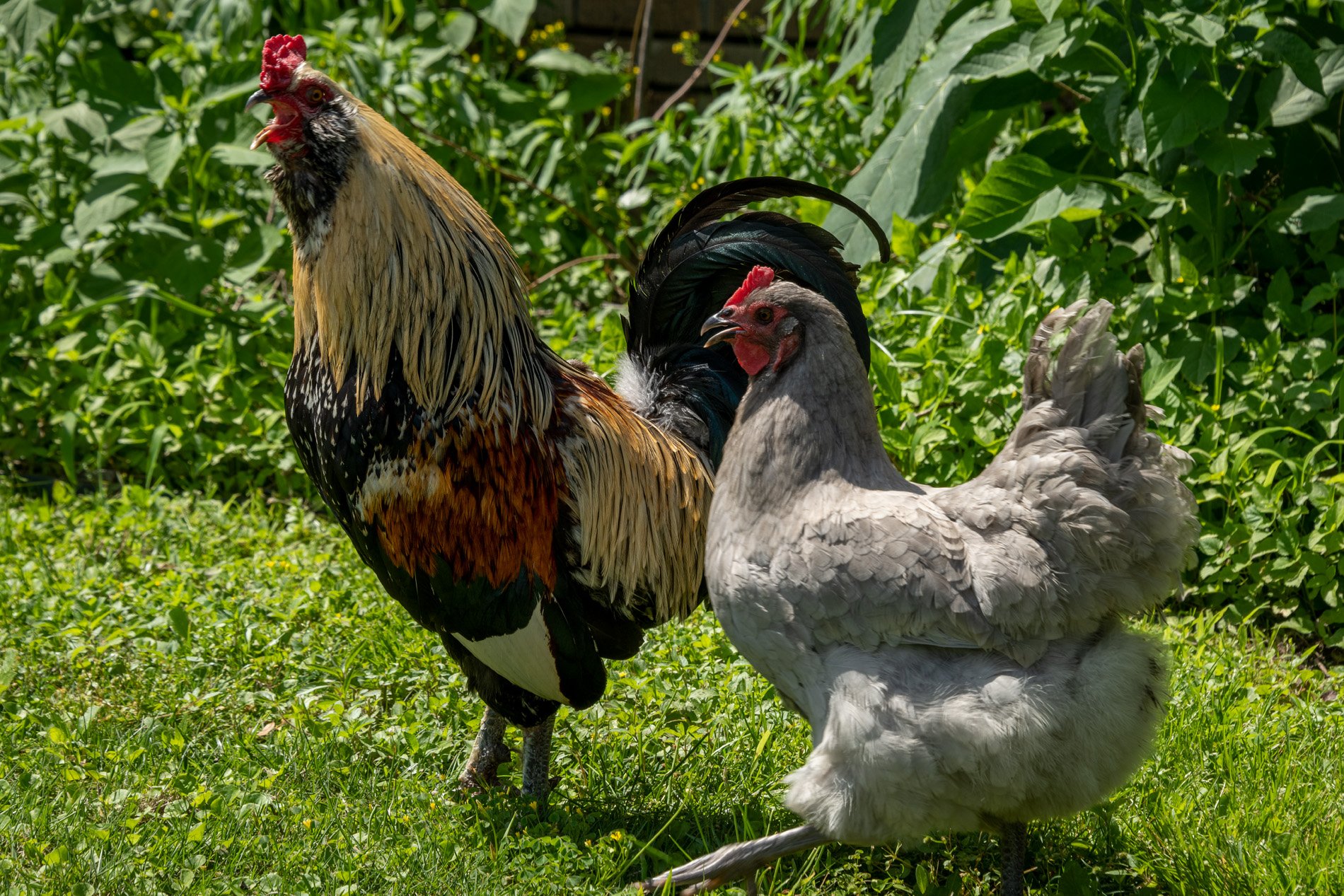
Peck + Scratch Installation
Eight chickens and two roosters were installed in Symbiosis, April 1, 2023, from 11:00-5:00
There's more than eggs when it comes to urban chickens. Peck and Scratch is a throwback to when every family had a symbiotic relationship with these quirky feathered friends. It was common knowledge that chickens are miraculous energy transformers; they effortlessly clean up weeds and bugs from living soil while providing families with a more sustainable and cost-effective alternative to chemical pesticides and herbicides. Plus, their waste is invaluable - it replenishes the soil with much-needed nutrients for plants to thrive. In addition, the protein-packed eggs they lay contain all the amino acids necessary for promoting brain health for early childhood development.
By offering a cozy environment, refreshing water, and a lush habitat, we're showing gratitude towards our curious and joyful friends and providing them a safe home away from potential harm. Instead of supporting factory farms, our chickens deserve to thrive in an ecosystem filled with living soil and all the essential components they need to lead happy, healthy lives.
It's time to think outside the (takeout) box and invest in the power of urban chickens.
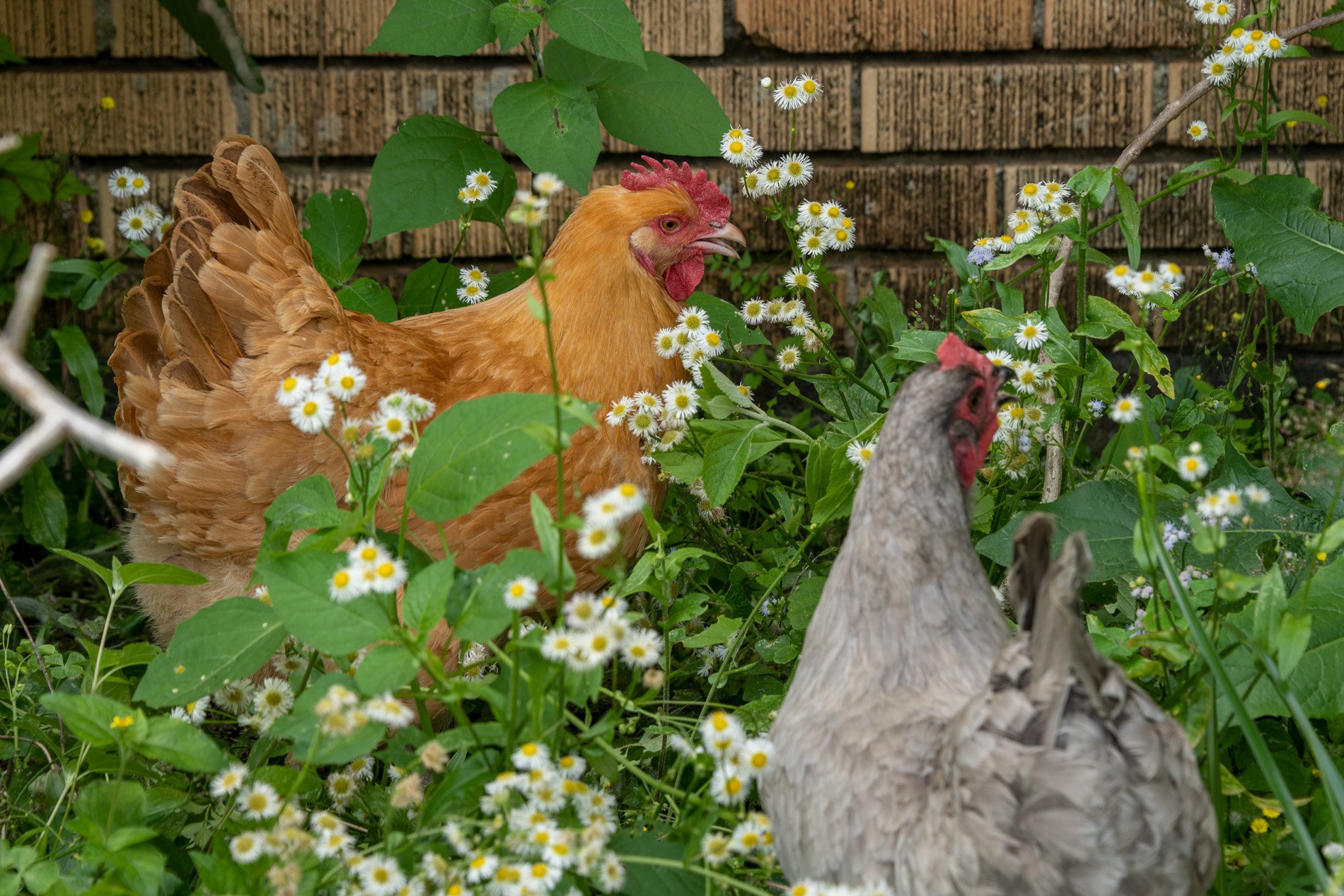
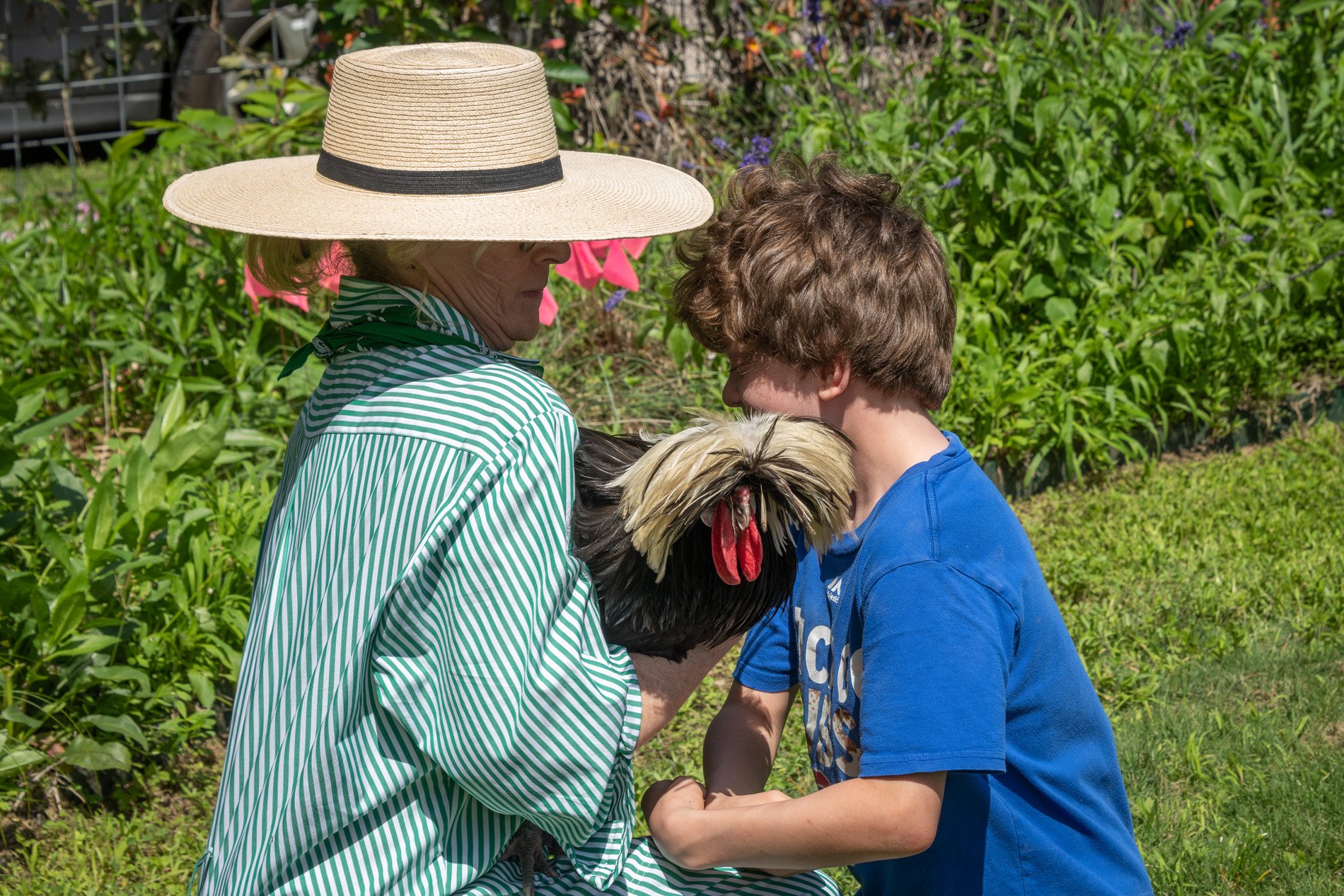
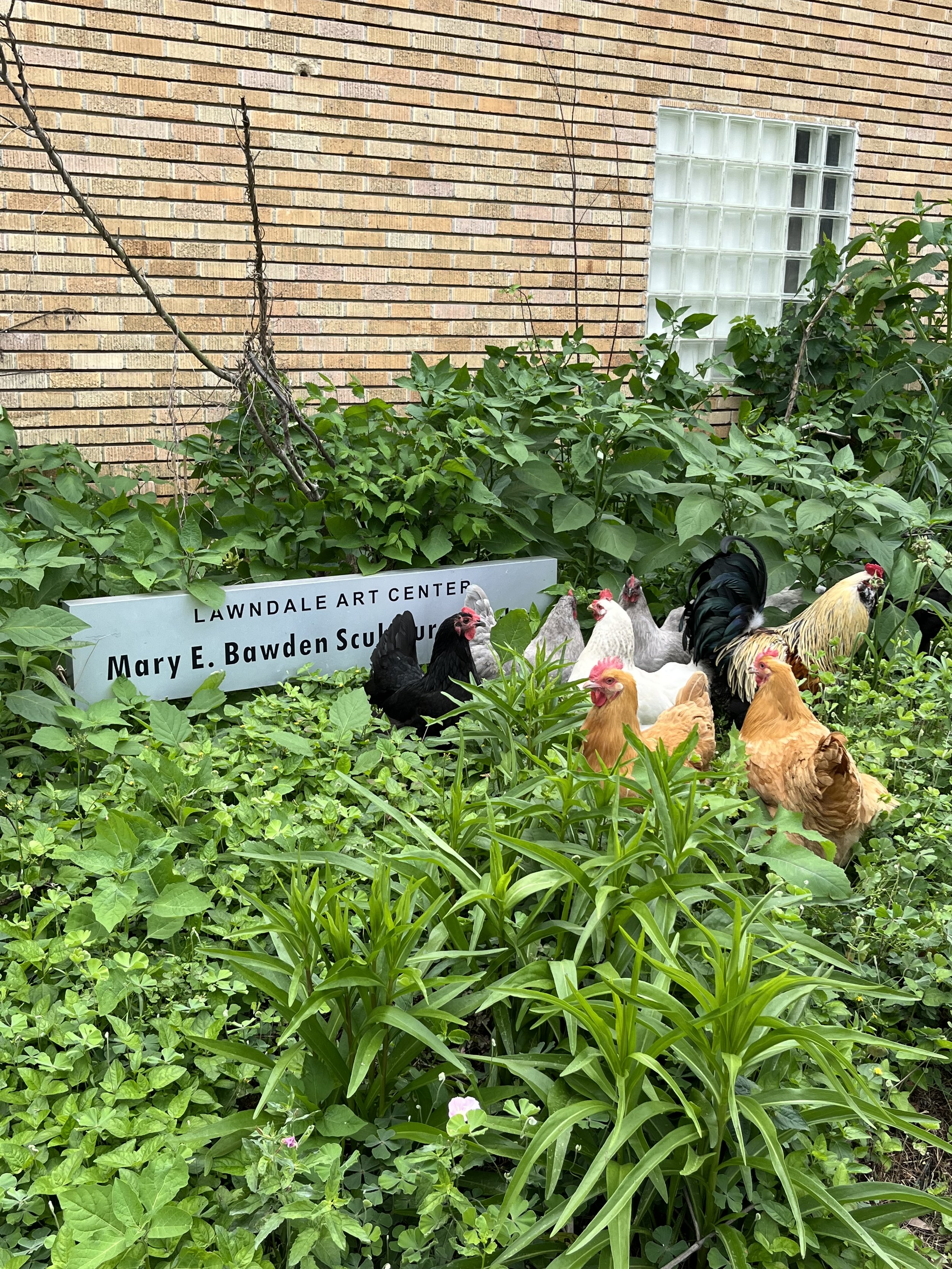

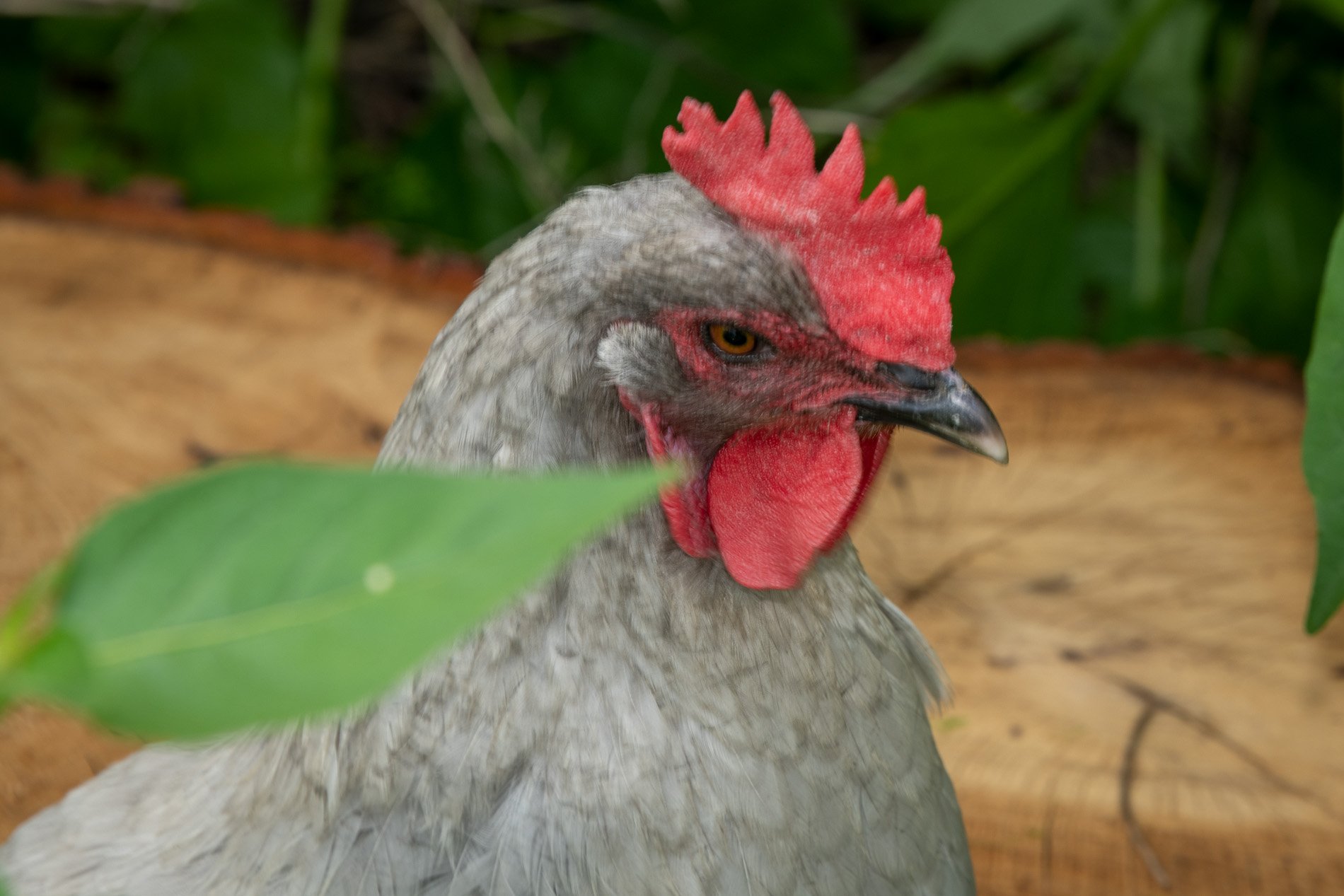

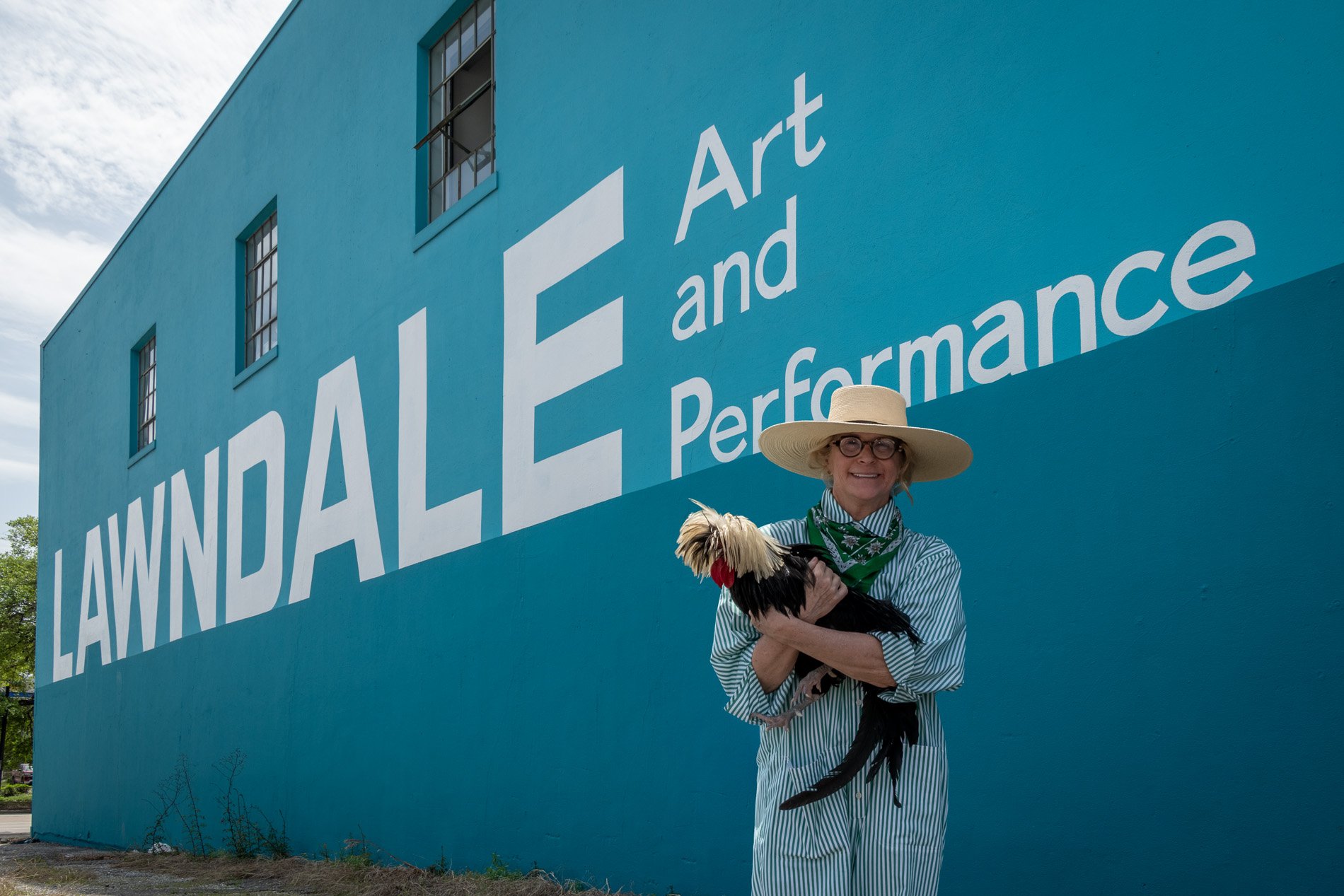
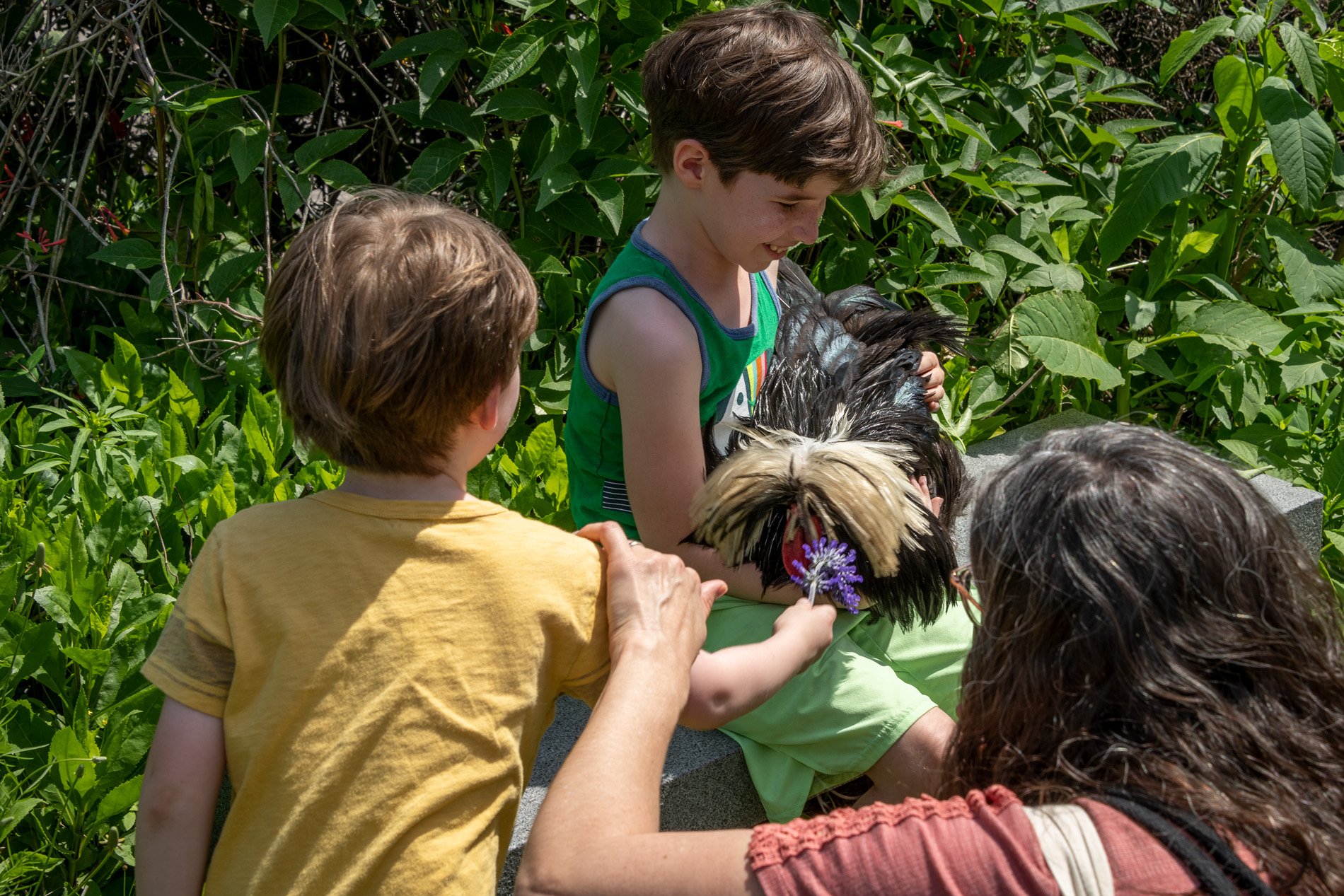
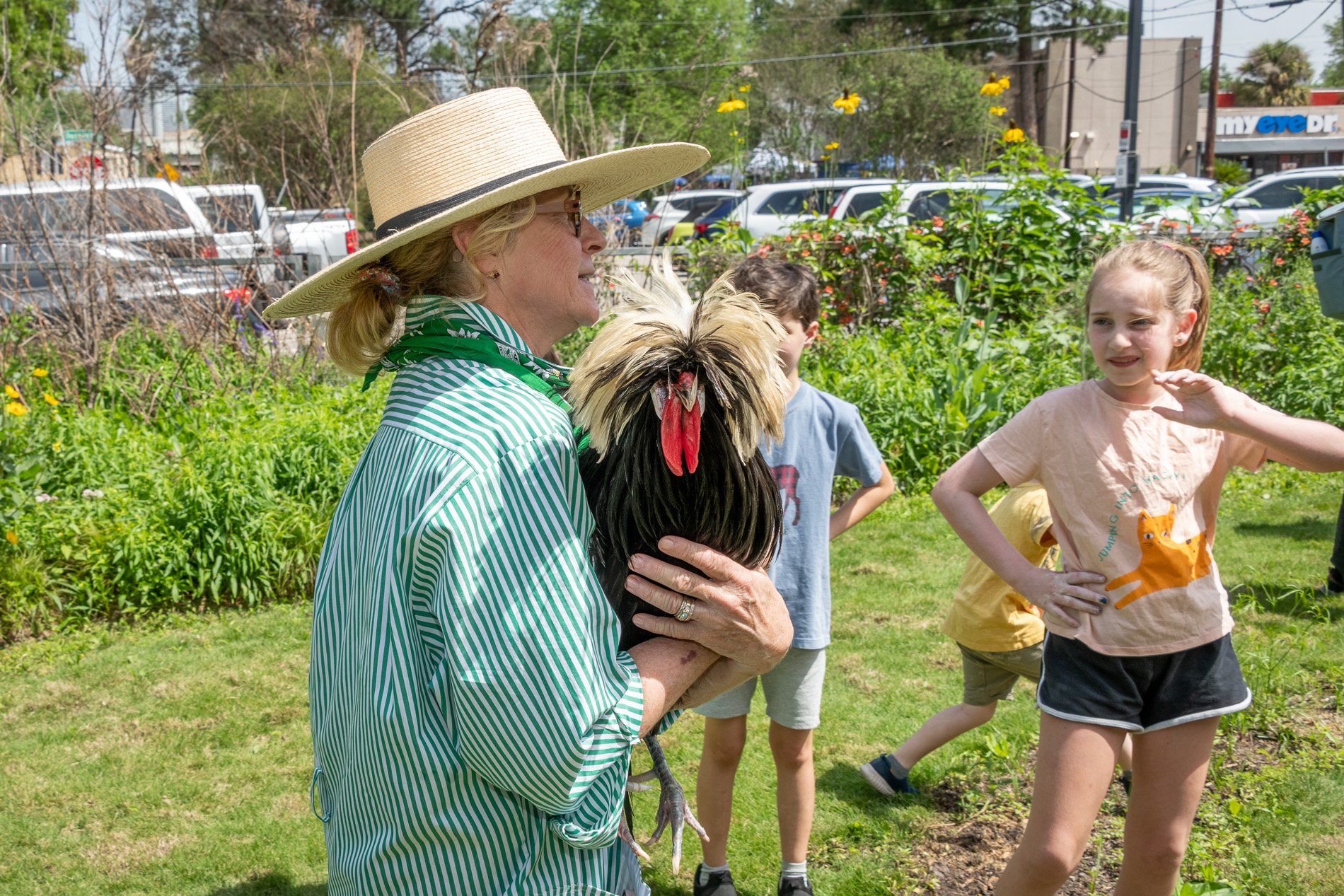

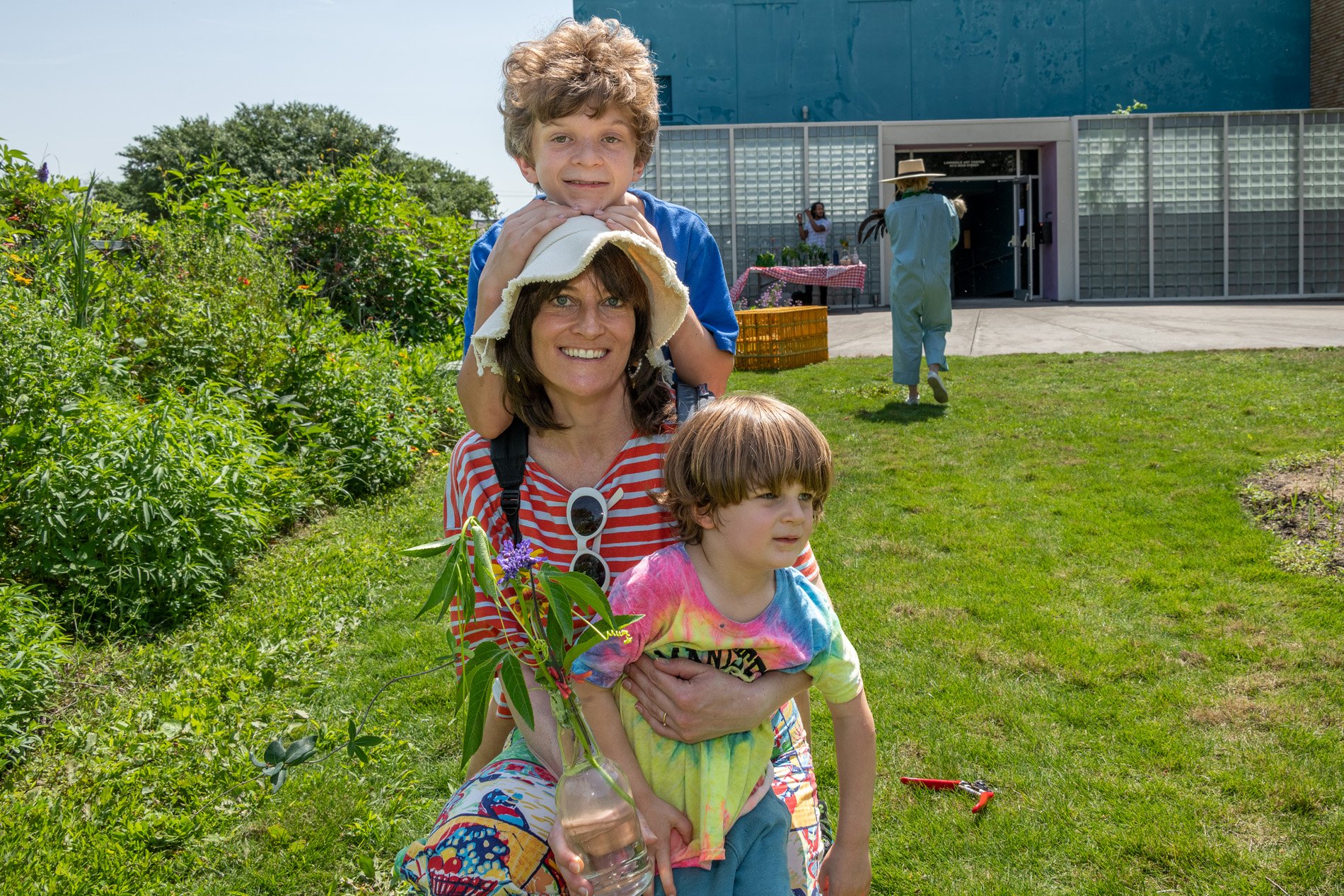
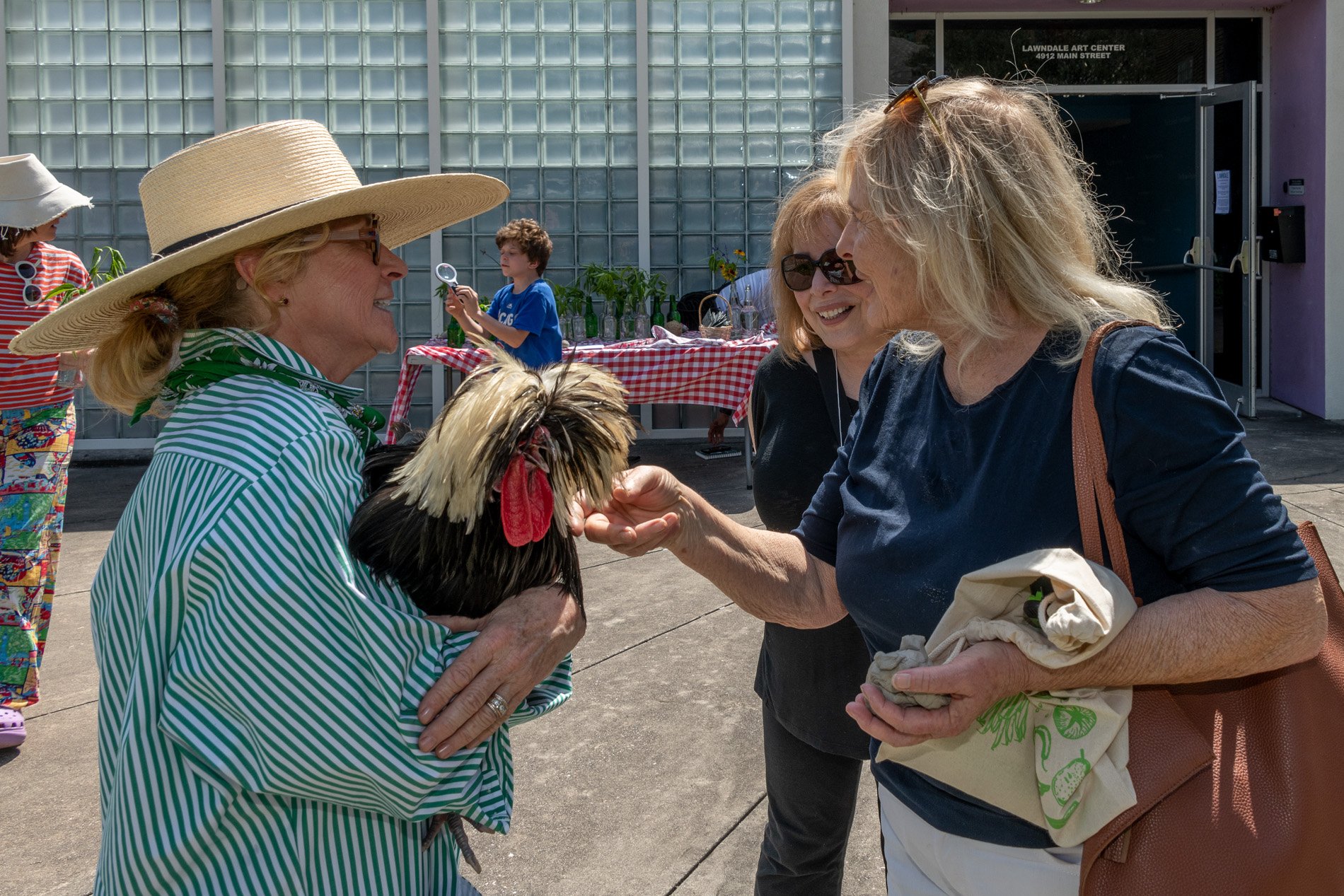
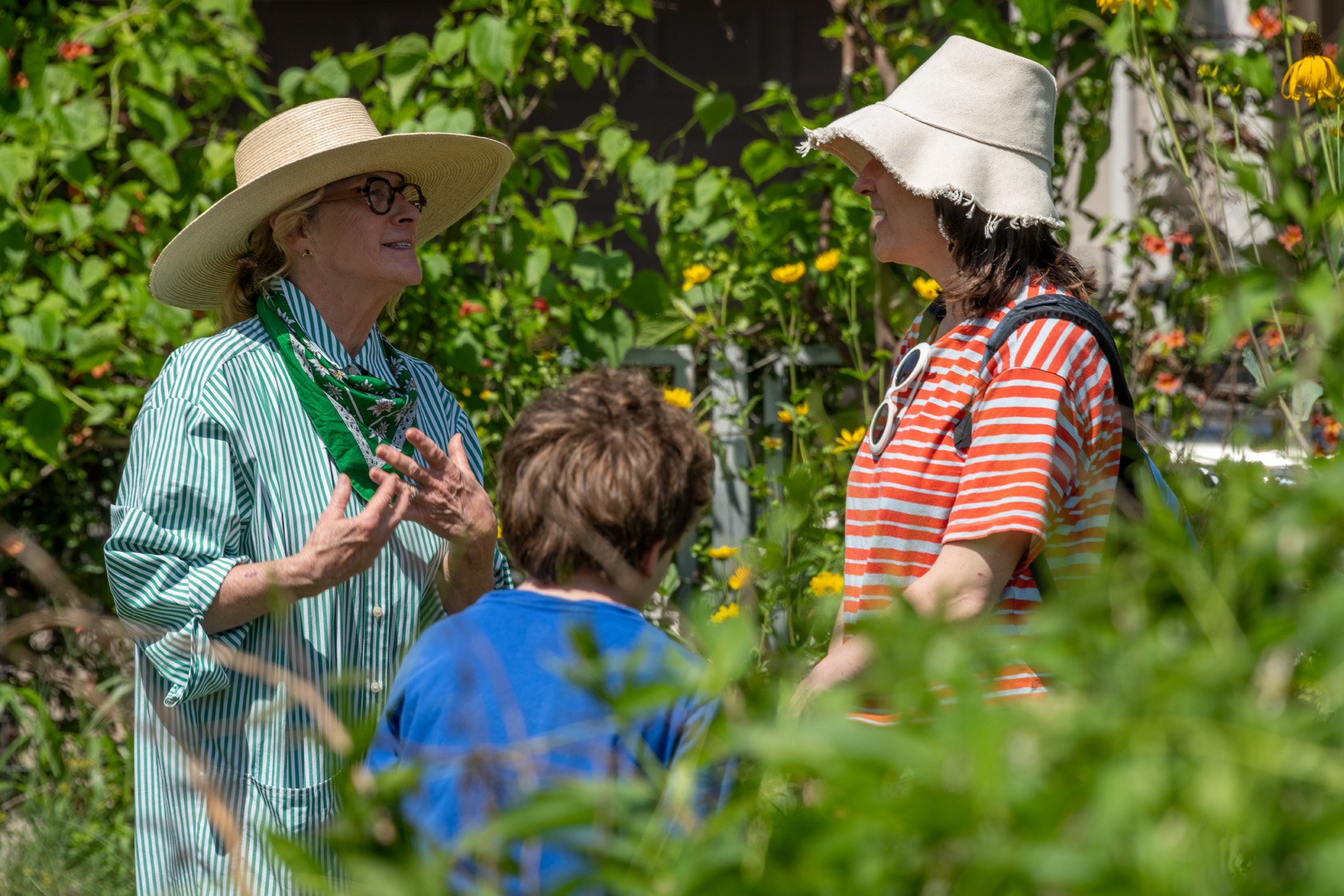
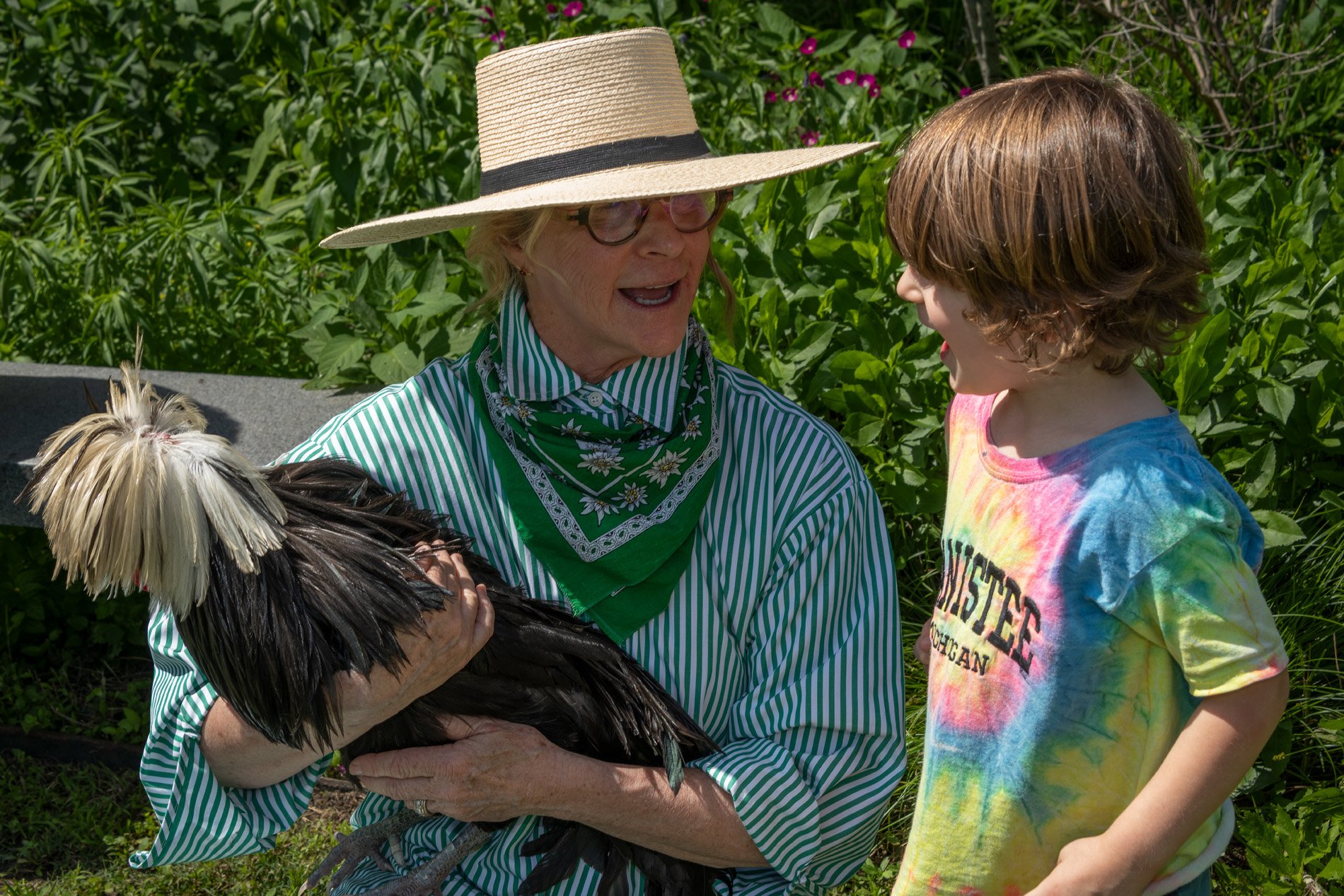
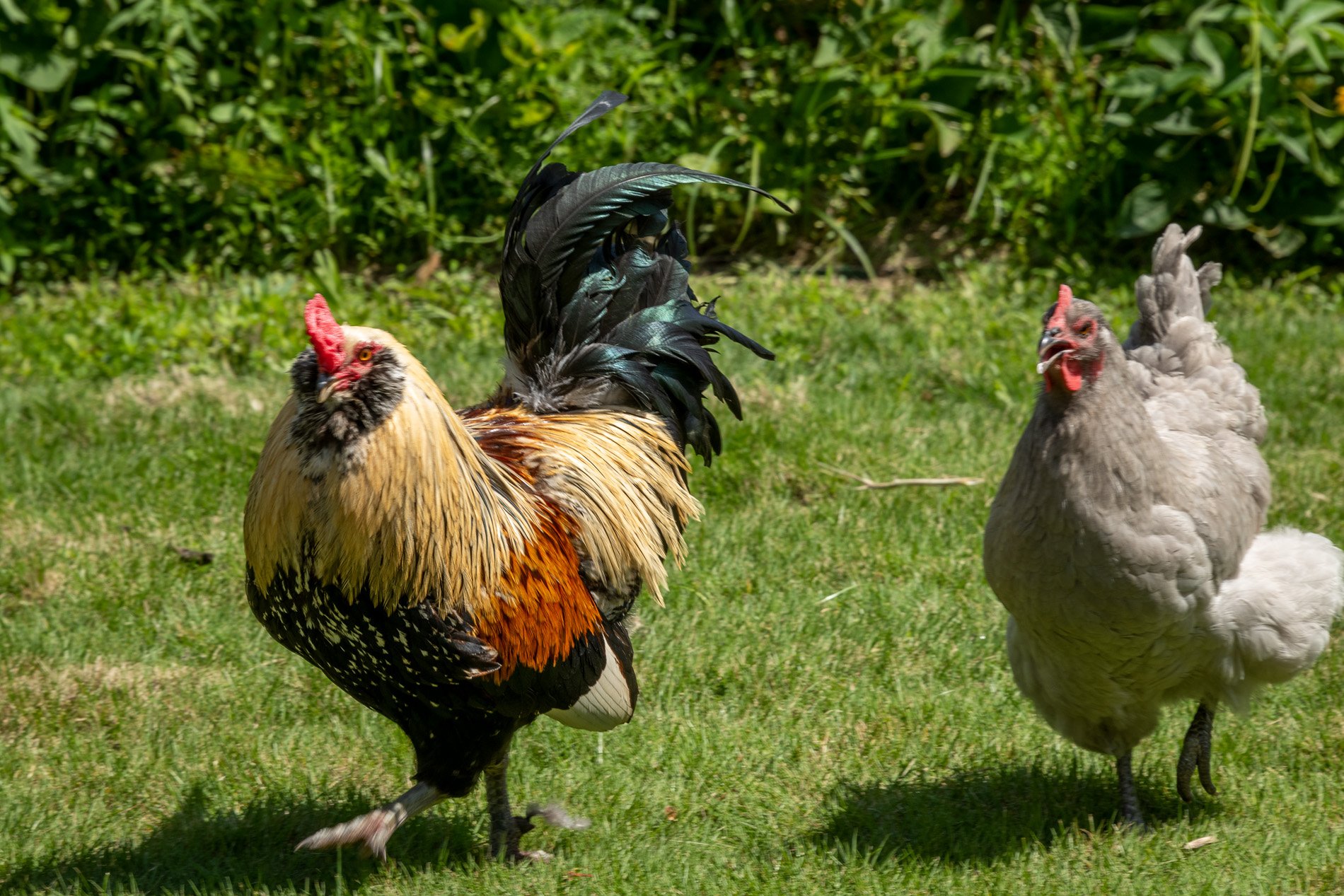

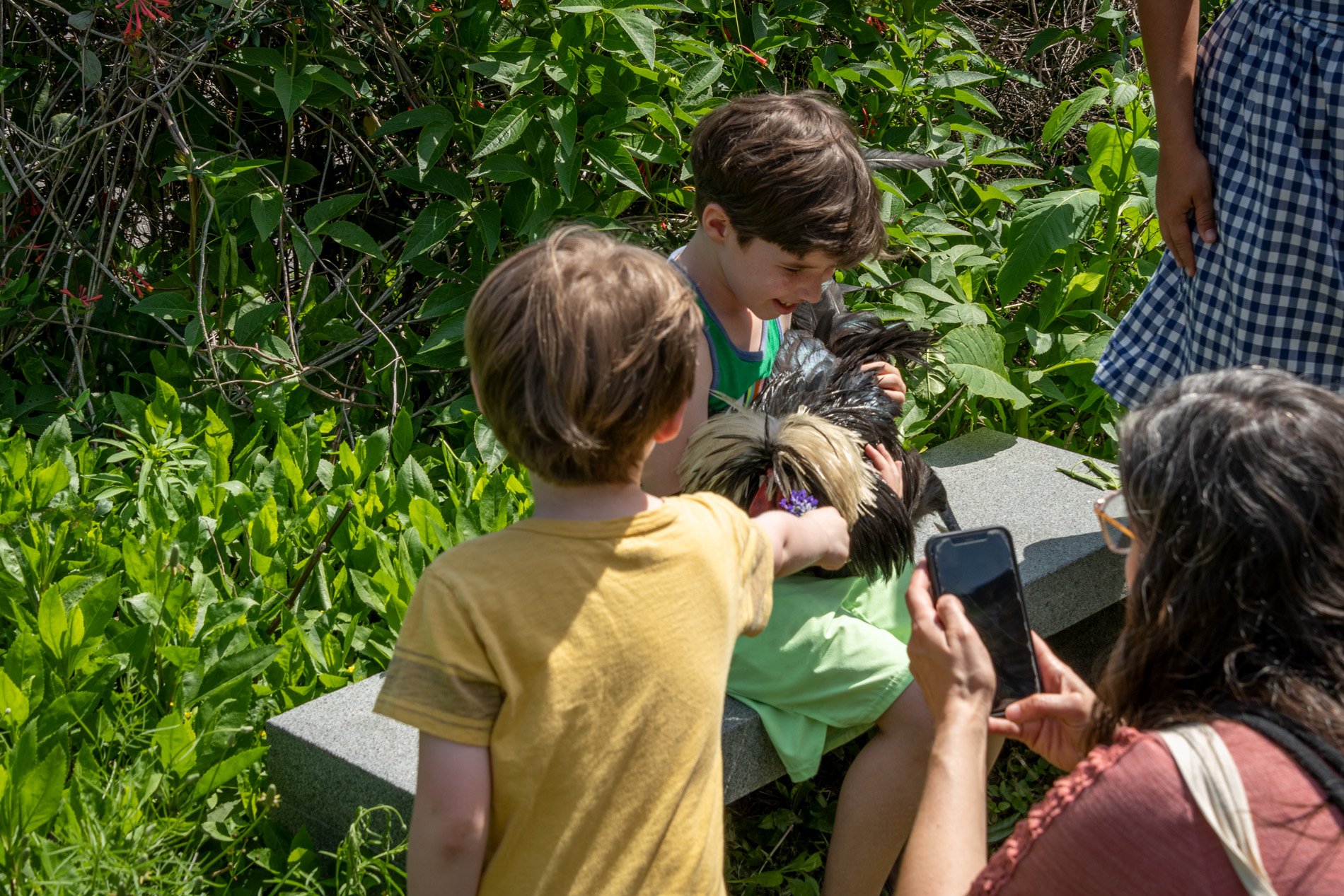
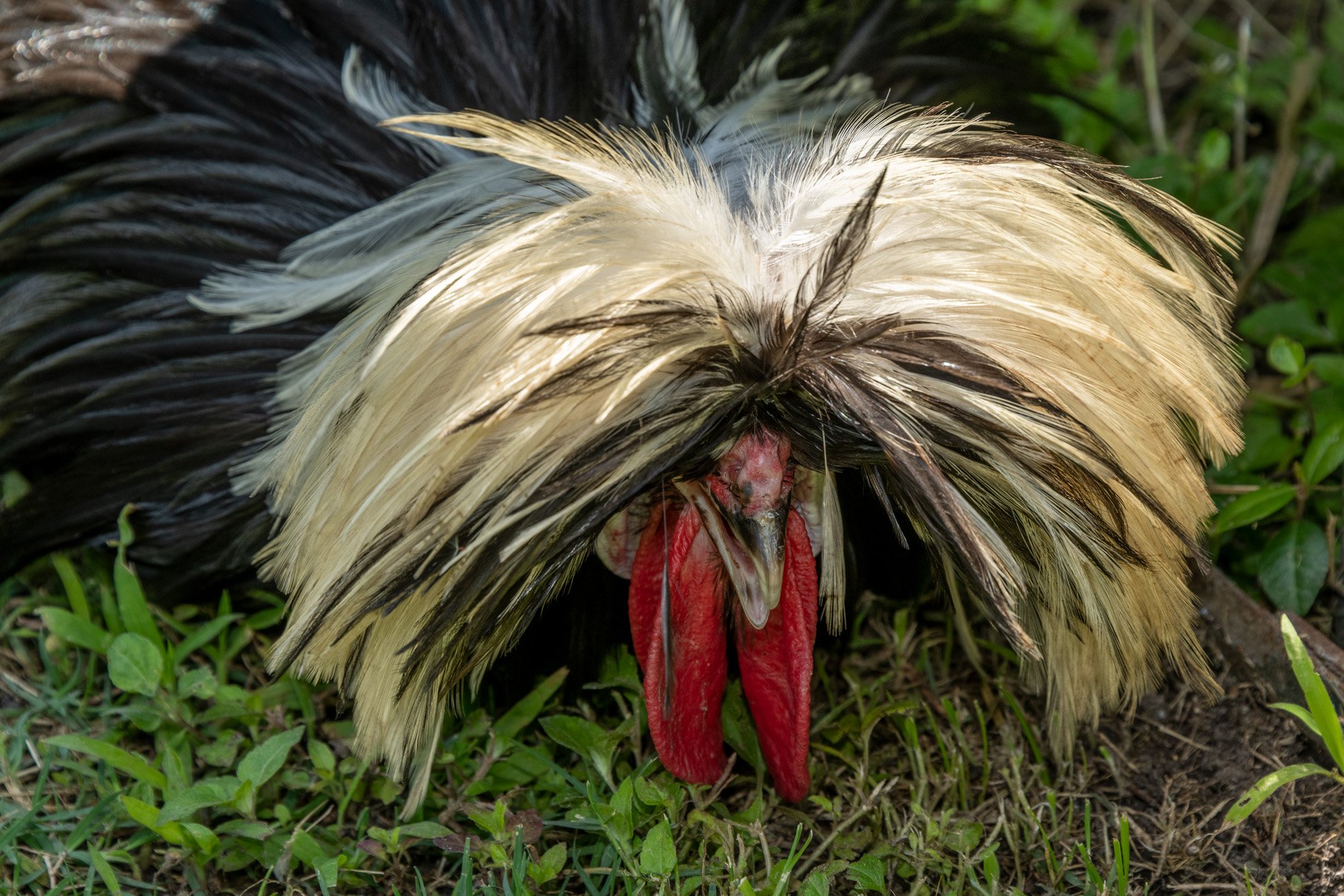
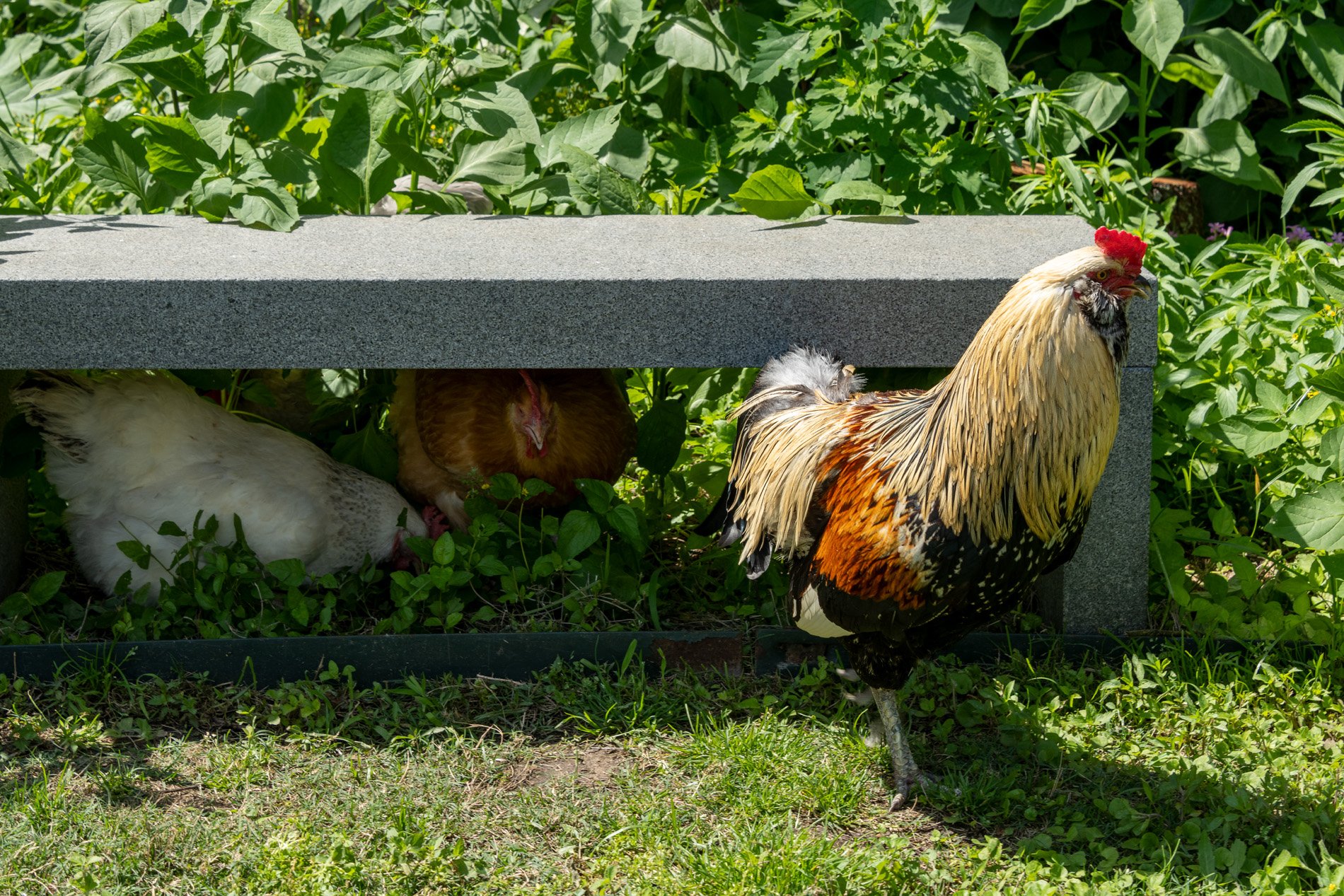
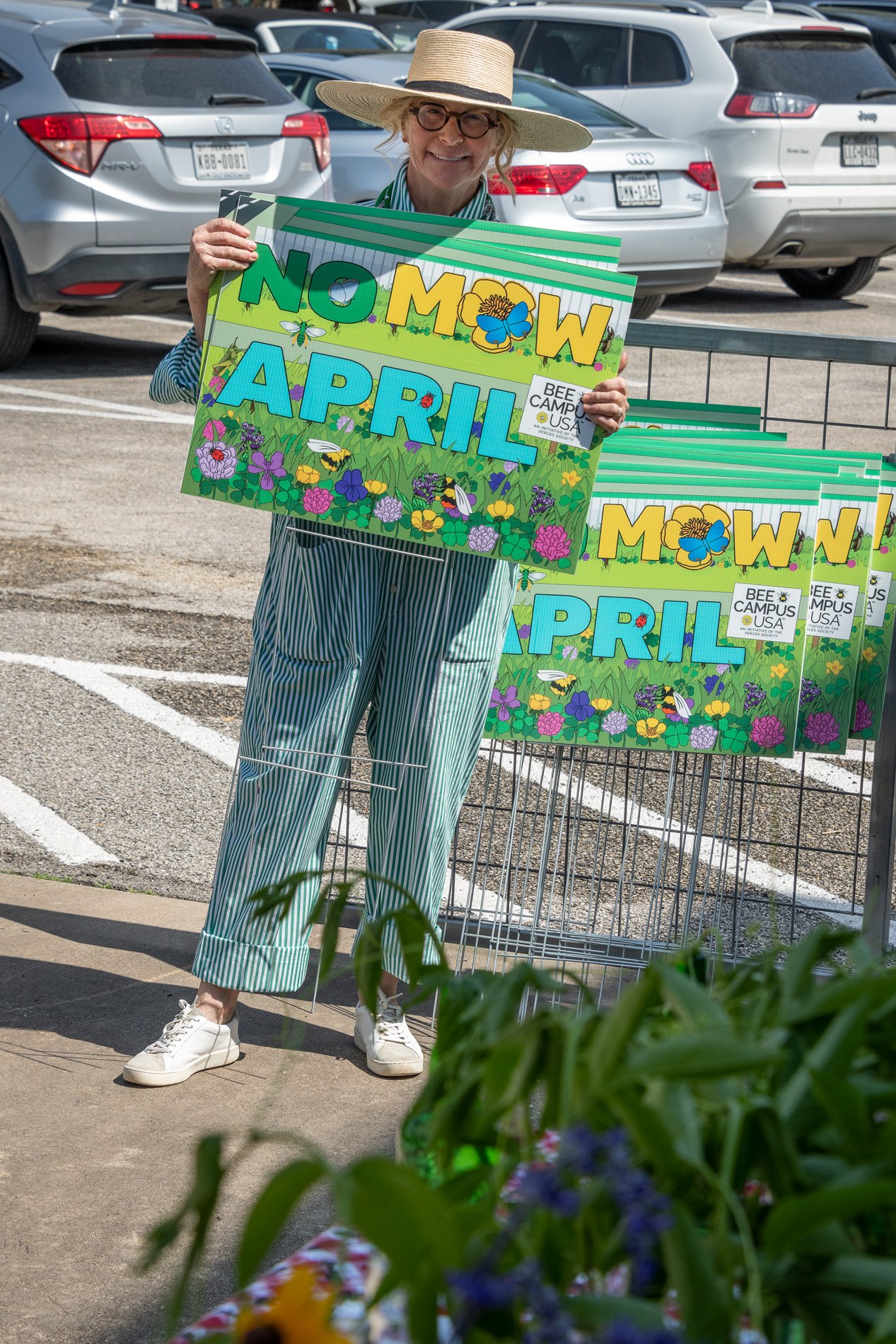
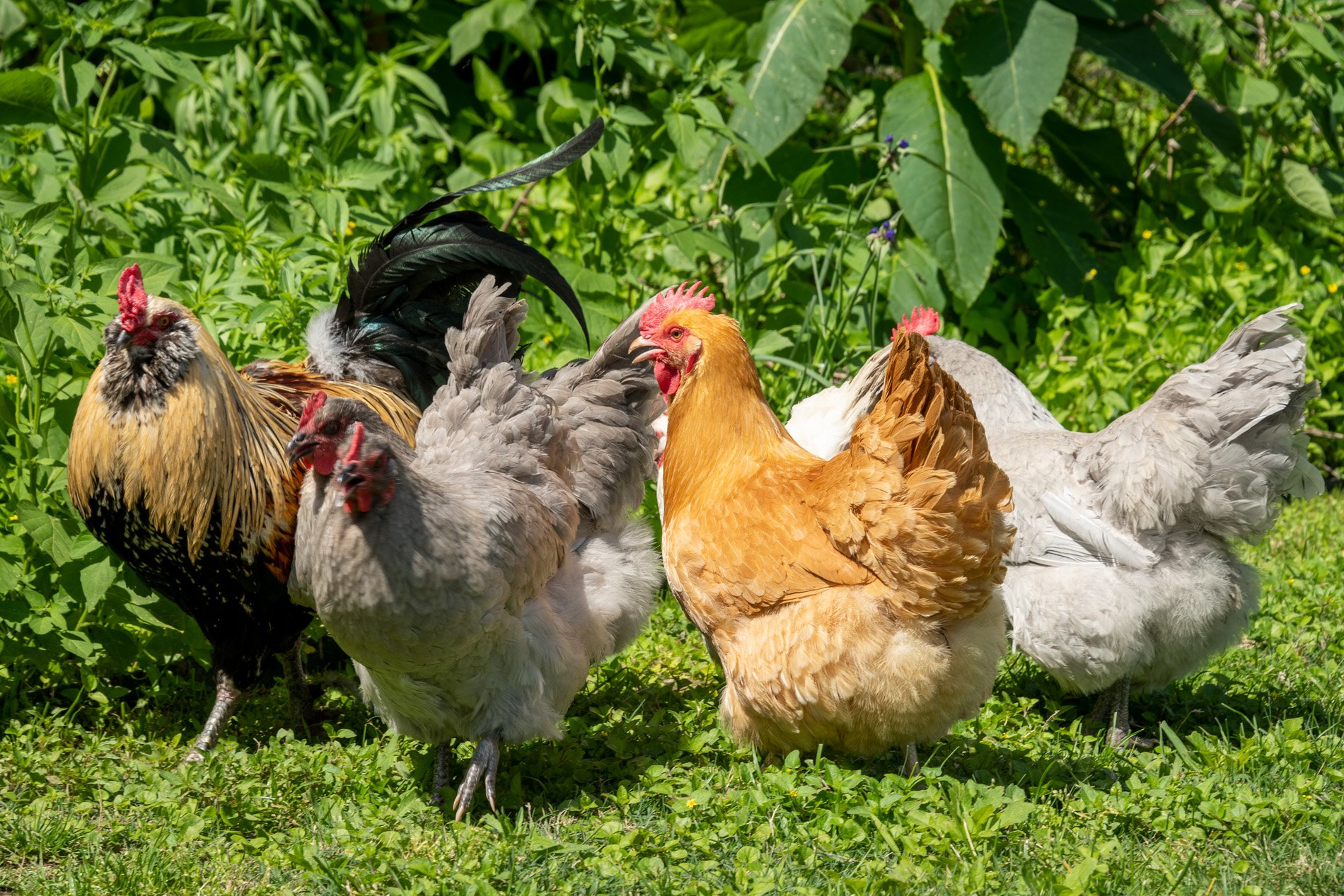
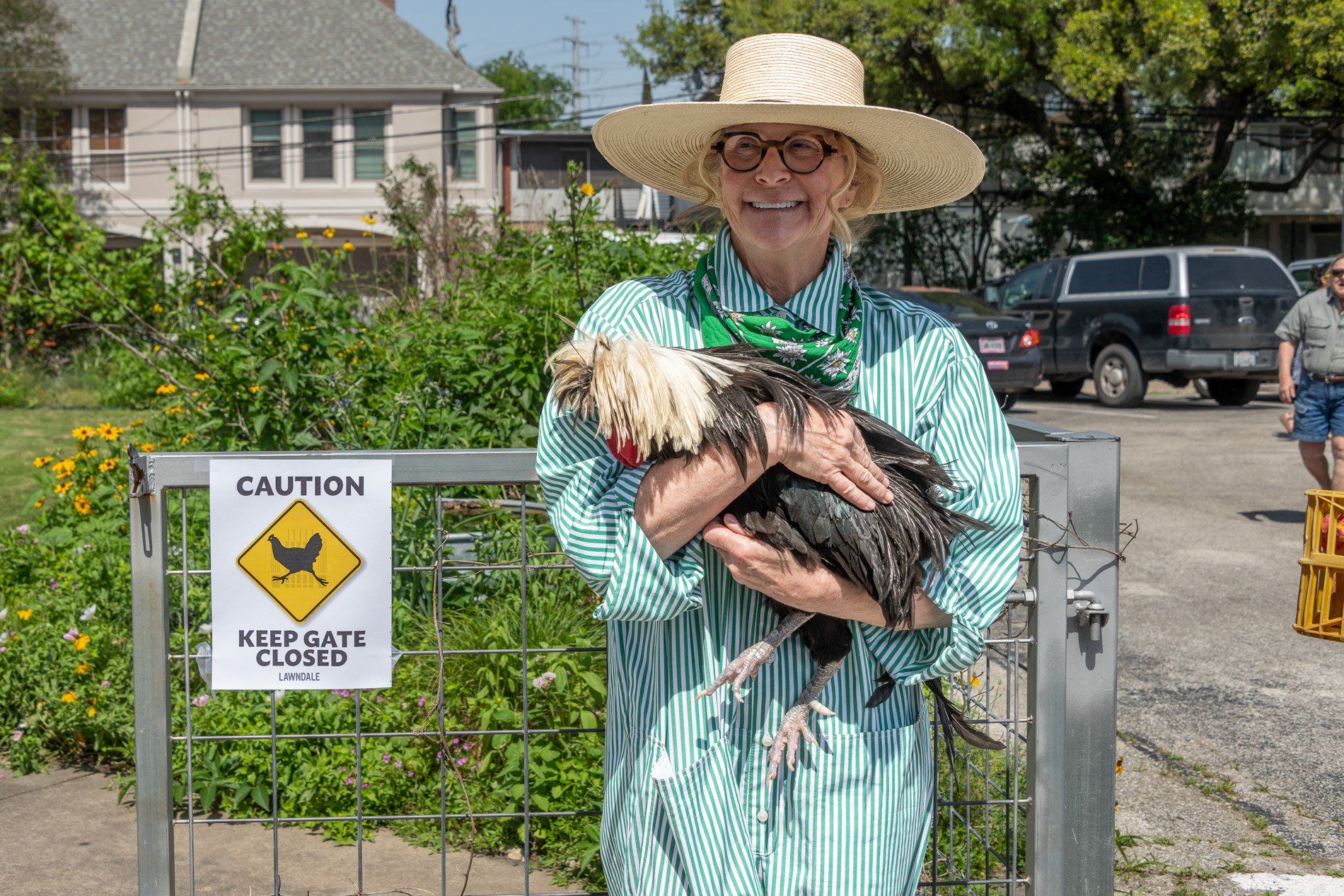



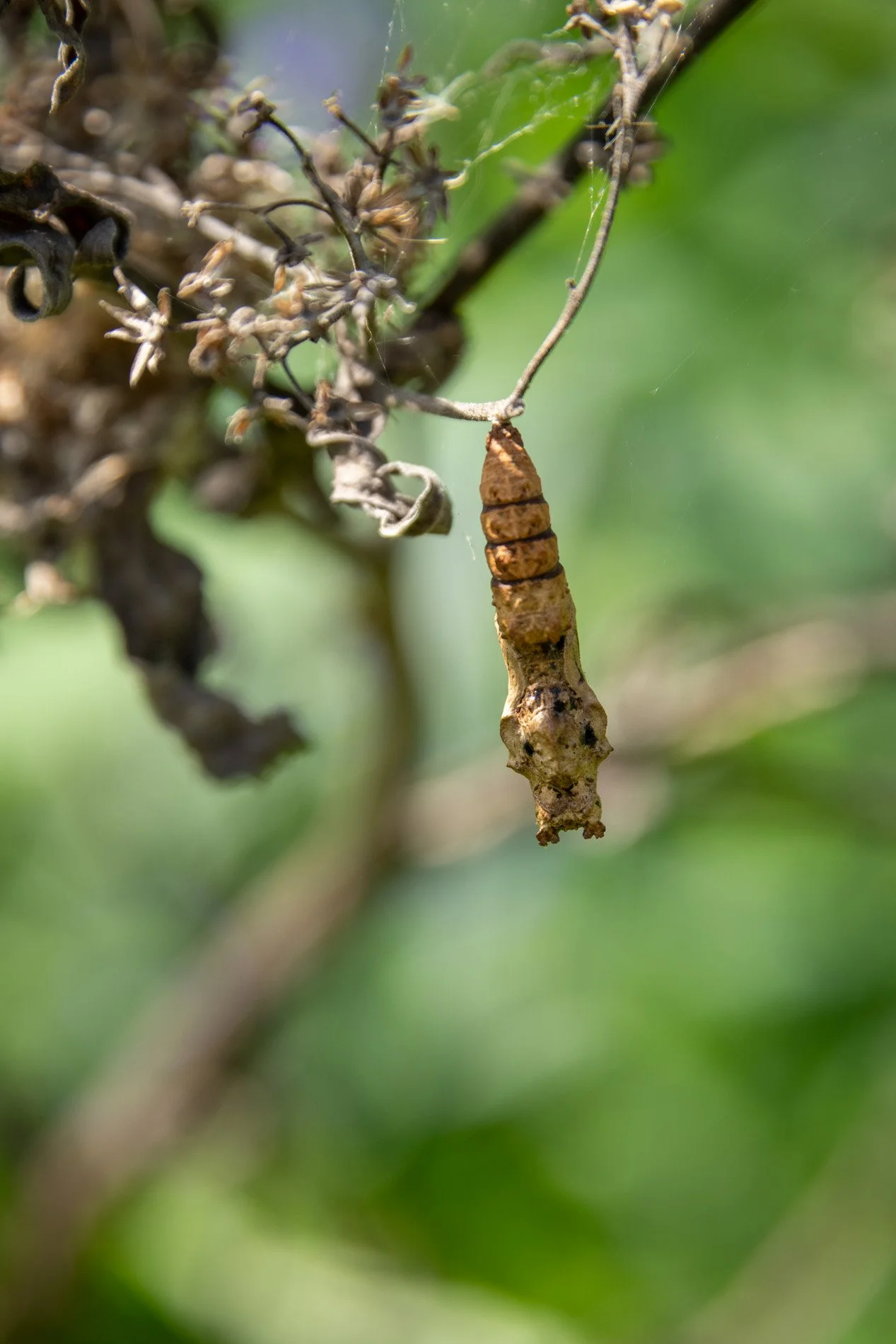
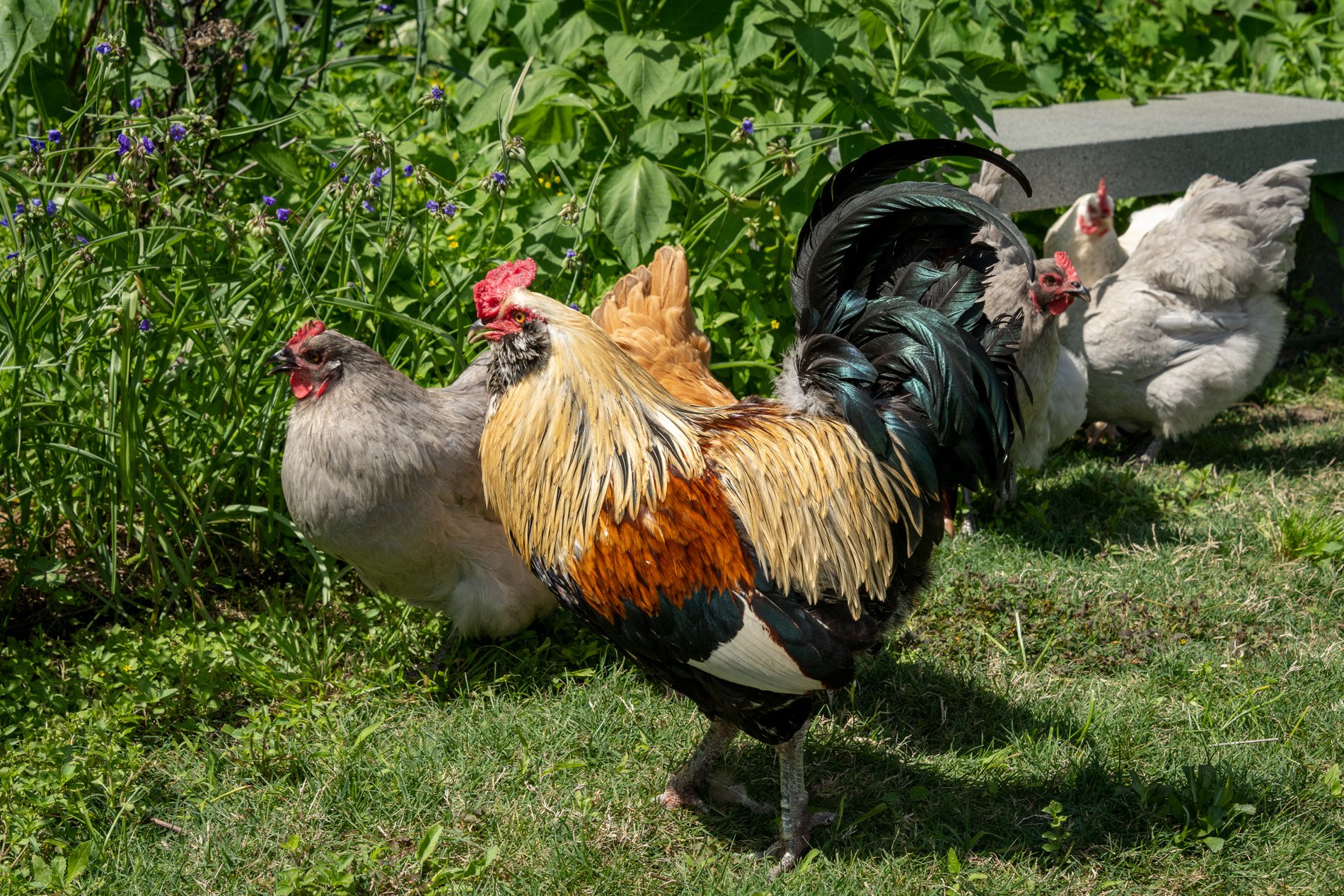

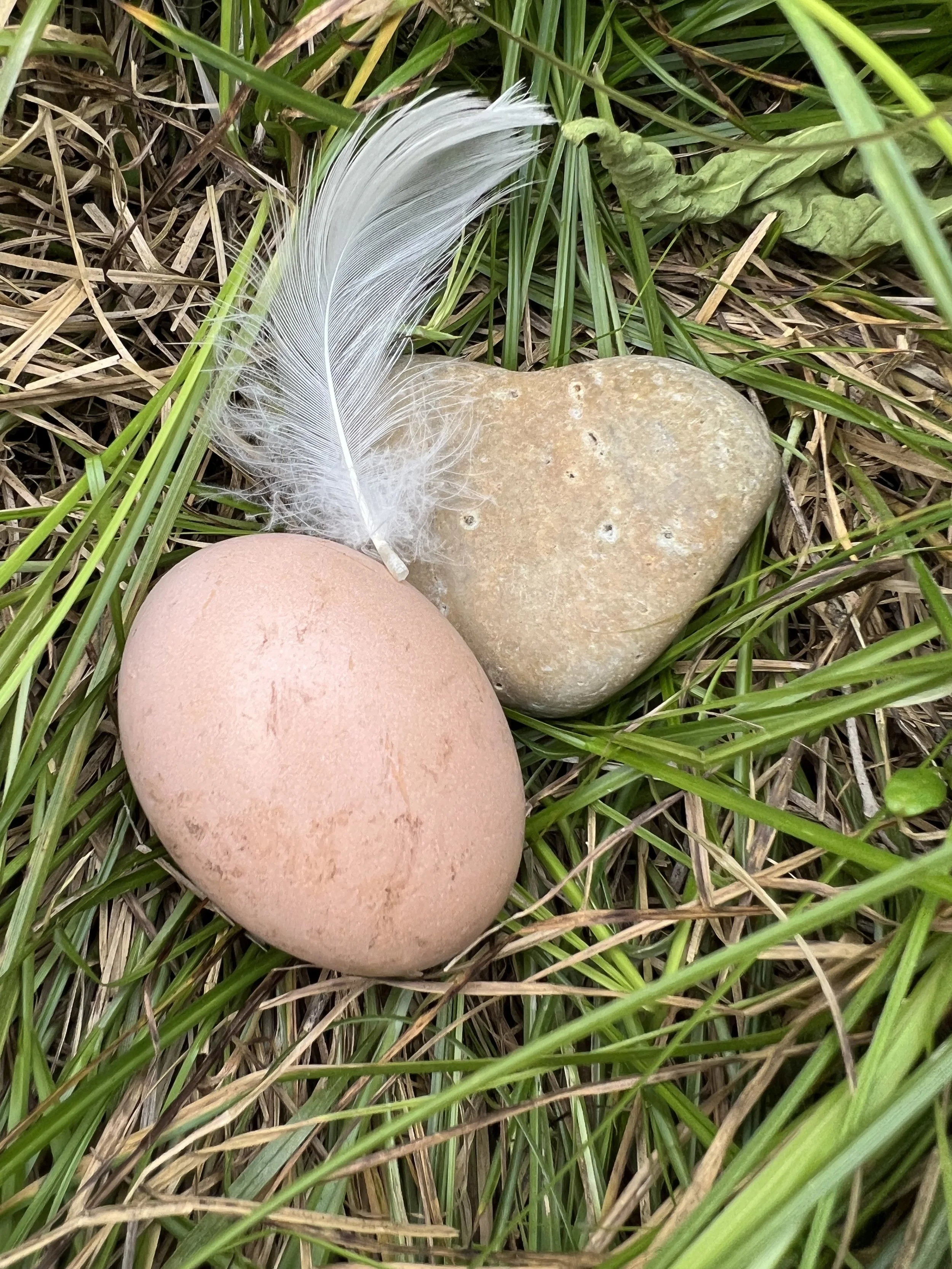
Originally Rumblings was going to be a wall of wild bee portraits, 50/10,000. It is time to start thinking about the next step.
Since I started these in 2019 my knowledge has expanded. It is no longer enough to exhibit the bees as portraits. They are an integral part of a bigger system. In incorporating systems thinking I will arrange the pieces into a 11’ X 25’ work on paper composition, an abstract eco-landscape that holistically balances urban and natural systems.
It will be a composition of twenty-eight 30” X 44” watercolor monotypes from my Rumblings* body of work. The pieces will be installed in a tight grid to reference urban development. Centered in each 30” X 44” piece is an abstract portrait of a wild pollinator.
The work will be completed in my studio when the defined space dimensions are finalized. At that time, I will select the portrait pieces and organize them in a systematic manner that works best for the size and shape of the proposed space. I will then transform the individual portraits into the monumental composition of an urban ecosystem that balances manmade and natural systems. To do this, I will add abstracted shapes representing biological systems that pollinators depend on into the blank spaces of the individual works. These marks will be extremely light and delicate, watercolor and pastel. They will be leaf and petal-like silhouettes of birds, vines, blooms, grasses, roots, water, and hooves. These shapes will weave in and out chaotically, connecting the portraits in the urban structured grid and transforming them into an ecologically balanced urban landscape composition.
RUMBLINGS* WORKS 2019 — present
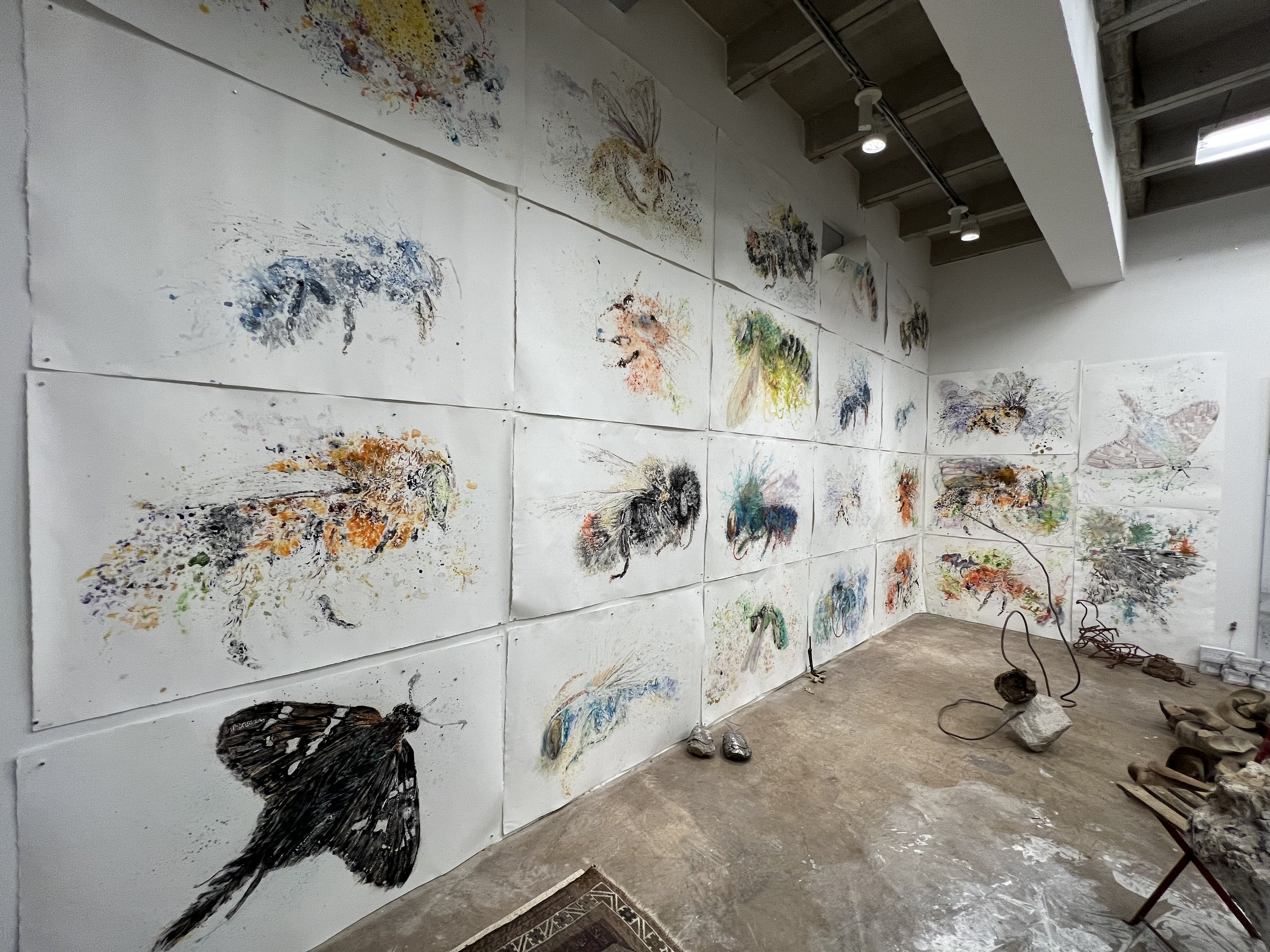
In 2020, I was asked by Lawndale to propose a sculpture for the sculpture garden. Instead of proposing one of my steel or bronze sculptures, I proposed a living sculpture titled Symbiosis. I have since endeavored to witness and record/document its growth and relationships through photography. These photographs will be my reference materials for more poetic documentation. Simultaneously I have sought out historical and contemporary ways of immortalizing natural history. My search led me to explore websites, antique stores, and estate sales, looking for how naturalists, explorers, and artists have documented Earth’s wildlife and plant life’s relationships throughout history. This research has led to the discovery of two exquisite artistic collections from 1705 and 1903 that sparked inspiration within: Maria Sibylla Merian's book Metamorphosis Insectorum (1705) as well as Theodore Jasper’s American Ornithologists' Union (1903). Both are incredibly valuable works that promise to help me find my wings and bring Symbiosis memories into full bloom.
For the next seven months, I will diligently document through photography the unique relationships as they develop in Symbiosis. When 2023 draws to a close, my contract with Lawndale runs out. Then, I will start the final chapter of the work. This project has become something special that needs to be immortalized in artworks showing their symbiotic relationships. With watercolor monotypes as my medium of choice and abstract expressionism becoming part of me along the process - these works are primed to tell stories of how humanity can reconnect with natural systems in urban landscapes.

Theodore Jasper’s American Ornithologists' Union (1903)

Theodore Jasper’s American Ornithologists' Union (1903)

Maria Sibylla Merian's book Metamorphosis Insectorum (1705)
“How fleeting are the wishes and efforts of man! how short his time! and consequently how poor will his products be, compared with those accumulated by Nature during whole geological periods.”
—Charles Darwin, Origin of the Species
Root to Water offers hope. The root, placed with the root system up, takes on anthropomorphic characteristics, as the widespread irrigation wheel’s legs are firmly grounded, the humanized root’s bent over posture and downward-pointing arm are alive with discovery, the root’s hair like tendrils are actively rewiring its human anthropomorphic brain. This rewiring is happening across the globe, in the most desolate of landscapes citizen conservationists are studying natural law and finding solutions to their man-made problems.
In Root to Water, the irrigation wheel symbolizes mechanistic systems. The root in its natural state represents ecological systems. With this duo, I propose that modern civilization has reached an advanced stage of industrialization. In order to progress to the next stage of civilization we must heed Darwin’s observation, and answer the question how do we pair mechanical innovation with the systems that have functioned through “whole geological periods.” I placed the root above the wheel supporting Darwin’s view of natural systems superiority to human innovation.
Repurposing two tools from agronomy, Root to Water shifts how we see mechanical systems versus naturally occurring systems. In this sculpture, a modern innovation—a rusting, decorative, human-made irrigation wheel—serves as a pedestal for an organic found object that often goes unseen: a root system. With this pairing, I exhibit man’s historical struggle to transition to an agricultural-based society utilizing human-made innovations that extract natural resources instead of harnessing existing ecological systems that regenerate resources.
Communities across the planet are experiencing extreme cases of natural disasters. Houston has experienced three 500-year floods in three years. The U.S. Army Corps of Engineers completed the Buffalo Bayou and Tributaries Resiliency Study, proposing options for controlling floodwaters costing up to $12 billion. The report does not include conveyance options that are local nature-based cost-effective solutions.
A growing number of conservationists are using natural systems, specifically roots, as a tool for water transportation, carbon sequestration and as a means to cool the planet. Meanwhile, industrial agricultural produces products that are depleting the organic matter, releasing carbon from the soil, and contributing to global warming. As evidence consider, “Each 1 percent increase in soil organic matter helps soil hold 20,000 gallons more water per acre.” In contrast, industrial methods strip the soil (releasing carbon), use petroleum-based inputs to enrich the soil and kill pests. Root to Water elevates roots as a natural system that transports water, minerals and carbon; stabilizes soil; and is instrumental in cooling Earth’s surface—a live-able solution for global warming.
My research-based art looks at the natural history of living soil and how it can be used to restore natural resources that is not commonly understood. I champion natural solutions to environmental issues with a focus on urban landscapes. Root to Water is part of my Endangered Knowledge work, a body of work in progress.
“Though the problems of the world are increasingly complex, the solutions remain embarrassingly simple.”
Further Reading
-Judith D. Schwartz, The Reindeer Chronicles, Water in Plain Site, and Cows Will Save the Planet
-Kiss the Ground, Directed by Joshua and Rebecca Tickell, with Woody Harrelson
-Organic Matter Can Improve Your Soil's Water Holding Capacity
-The Loess Plateau was the, most highly erodible soil on earth”
A Monarch mimic-
Viceroy butterfly and Seaside goldenrod. I thought it was a Monarch however it was a Minarch mimic. “Müllerian mimicry is a natural phenomenon in which two or more well-defended species, often foul-tasting and sharing common predators, have come to mimic each other's honest warning signals, to their mutual benefit. The benefit to Müllerian mimics is that predators only need one unpleasant encounter with one member of a set of Müllerian mimics, and thereafter avoid all similar coloration, whether or not it belongs to the same species as the initial encounter.”wikipedia
